VA Streamline Refinance: How It Works and When to Get One
If you’re a veteran with a VA home loan, there’s a simple way to refinance that could save you money.
A VA streamline refinance — or VA interest rate reduction refinance loan (IRRRL) — may be able to lower your interest rate, shorten your mortgage term, or shrink your monthly payment, often with no appraisal or credit underwriting.
Here’s what you need to know about VA streamline refinances:
What is a VA streamline refinance (VA IRRRL)?VA streamline refinance loan benefitsDrawbacks of VA streamline refinance loansVA streamline refinance eligibility guidelinesVA IRRRL costsHow to apply for a VA IRRRLIs a VA streamline refinance loan right for you?
What is a VA streamline refinance (VA IRRRL)?
If you’re an active-duty military service member, veteran, or surviving spouse with a VA mortgage, you might be thinking about refinancing to lower the interest rate on your current home loan.
An IRRRL can help you accomplish this by replacing your existing VA loan with a new one that has a different interest rate and monthly payment, and possibly a different term.
What makes this refinance “streamlined” is that it typically requires fewer steps and less paperwork. For instance, the VA doesn’t require an appraisal or credit underwriting for this loan, which means you’ll usually close faster than someone doing a conventional refinance.
Learn More: How Soon You Can Refinance: Typical Waiting Periods By Home Loan
VA streamline refinance rates
Veterans United, a major originator of VA loans, says that the interest rates on VA loans tend to be 0.5% to 1.0% lower than the interest rates on conventional mortgages. And lending statistics from ICE Mortgage Technology show that from January through August 2021, VA loan rates were about 0.3 percentage points lower than conventional loan rates on a 30-year, fixed-rate mortgage.
Good to know: While somewhat helpful, general figures like these won’t tell you what type of mortgage you’ll get the best rate on. Your personalized rate depends on your financial situation and what’s happening in the mortgage market when you apply.
Rates also vary by mortgage lender, loan term, and how much home equity you have. For example, if you have at least 20% equity and can pass underwriting and an appraisal, you might find a better interest rate and lower APR by refinancing into a conventional loan, even if you qualify for an IRRRL.
Getting pre-approved with multiple lenders will give you the best idea of what rates you qualify for. It’ll also allow you to compare loan costs and get a taste of the lender’s customer service before committing to the mortgage approval process. While Credible doesn’t offer VA streamline refinances, we can help you find a great rate if you’re refinancing a conventional loan.
Find out if refinancing is right for you
Actual rates from multiple lenders – In 3 minutes, get actual prequalified rates without impacting your credit score.Smart technology – We streamline the questions you need to answer and automate the document upload process.End-to-end experience – Complete the entire origination process from rate comparison up to closing, all on Credible.Find My Refi Rate
Checking rates will not affect your credit
Trustpilot
VA streamline refinance loan benefits
A VA streamline refinance has several appealing advantages:
Competitive rates: VA loan rates tend to be similar to or slightly less than conventional loan rates.No private mortgage insurance: Even with less than 20% equity, there’s no PMI or equivalent for VA loans like there is for conventional loans and FHA loans.No appraisal: A no-appraisal refinance will save you a few hundred dollars in upfront costs. It also means you may be able to refinance a home that’s lost value.Less documentation: A VA streamline refinance doesn’t require underwriting, so you may be able to forgo gathering bank statements and tax returns for lenders.Closing cost financing: Avoid out-of-pocket costs by rolling closing costs into your new loan.Quick closing: No underwriting and no appraisal means it likely won’t take as long to refinance your home.No occupancy requirement: You can do a streamline refinance on a home you no longer occupy as your primary residence.Catch up if you’ve fallen behind: If your VA loan is past due, you may be able to use an IRRRL with credit underwriting to catch up on overdue payments, pay off late fees, and get into a more affordable loan that will stabilize your situation.Good to know: The VA’s lending guidelines don’t require credit underwriting or an appraisal for an IRRRL, but they also don’t forbid it. Lenders may still want to check your credit or order an appraisal, and if they do, they’re allowed to charge you for those costs.
Drawbacks of VA streamline refinance loans
Even though a VA streamline refinance is meant to be money-saving and efficient, you should understand how its drawbacks might affect you:
Funding fee: You’ll pay a funding fee each time you get a VA loan. The fee is 0.5% of the loan amount for an IRRRL.Existing VA loan required: If you have a conventional loan or FHA loan, you’re not eligible for an IRRRL. However, you may qualify for a VA cash-out refinance.Closing costs: Expect to pay fees for loan origination, title insurance, and local government requirements.Restarting your loan term: Many borrowers choose the same loan term when they refinance. If you currently have a 30-year loan that you’ve been paying for four years, you’ll be mortgage-free in 26 years. But if you refinance into a new 30-year loan, you’ll have to start over.No cash out: Borrowers are not allowed to cash out any equity with an IRRRL unless the money is a reimbursement for energy-efficient home improvements completed within 90 days of closing and costing no more than $6,000.Waiting period: You’re not eligible for an IRRRL until you’ve had your existing VA loan for 210 days and made six consecutive monthly payments.Tip: You can avoid restarting your loan term by refinancing into a shorter term or prepaying principal on your new mortgage. If you refinance into a shorter term and your new payment is at least 20% higher than your existing payment, you’ll have to go through underwriting.
Compare Your Options: 3 Ways to Refinance a VA Loan
VA streamline refinance eligibility guidelines
Qualifying for a VA streamline refinance can be easier than qualifying for other refinance loans. Here are the key criteria and a brief explanation of each one:
RequirementDescriptionYou’re refinancing a VA loanYou can’t use a VA IRRRL to refinance a conventional, FHA, or USDA loan.You’re no more than 30 days behind on paymentsIf you’re more than 30 days behind, you’ll have to go through underwriting.The home has been your primary residenceIt’s OK if your home is not your primary residence anymore or won’t be after you refinance, as long as it was previously.Your new loan won’t push back your payoff date by more than 10 yearsFor example, if you have 12 years left on your VA loan, your new loan term can’t be longer than 22 years. That means you wouldn’t be able to refinance into a 30-year loan. Your new loan will have a lower interest rateOne exception: You can refinance into a higher rate if you’re refinancing an adjustable-rate mortgage (ARM).You don’t want to cash out any equityThere’s no cash-out refinance option with an IRRRL. Look into a VA cash-out refinance instead.
VA IRRRL costs
The closing costs for a VA streamline refinance are similar to the closing costs for other VA loans. However, you likely won’t have to pay for an appraisal, which will save you a few hundred dollars. Here are some of the closing costs often associated with a VA IRRRL:

Closing costs typically range from 2% to 5% of the loan amount. Most borrowers pay an origination fee, title insurance fee, and deed recording fee. You may also owe local taxes, which are inexpensive in some areas and quite costly in others. And some borrowers choose to prepay mortgage interest through points in exchange for a lower interest rate.
A closing cost unique to VA loans is the VA funding fee: on an IRRRL, the fee is 0.5%, or $500 for every $100,000 borrowed. You may be exempt if you’re receiving payments for a service-connected disability or you’ve earned a Purple Heart.
Rolling closing costs into your VA IRRRL
An IRRRL allows you to roll your closing costs into the loan. You might benefit from this option if
you stand to save a lot from refinancing but don’t have cash on hand. It can also be a smart move if you’re planning to sell your home the next time you get permanent change of station (PCS) orders. It probably doesn’t make sense to pay a lot up front for a loan you’ll have short term.
On a 30-year mortgage, here’s how much more you would pay over the life of the loan by rolling $12,000 in closing costs (4% of $300,000) into the loan instead of paying them up front.
Interest ratePay closing costs up frontRoll closing costs into loanAdditional cost3%$12,000.00$18,345.30$6,345,304%$12,000.00$20,721.16$8,721.165%$12,000.00$23,388.64$11,388.64
While inflation is normally seen as a bad thing, it can be good for mortgage debtors with fixed interest rates. As years pass, even modest price and income inflation can make your mortgage debt feel less expensive.
In other words, while an extra $6,300 may sound like a lot today, it’ll feel like less and less each year due to inflation. Still, the higher your interest rate, the less you may want to borrow.
How to apply for a VA IRRRL
If you apply for a VA IRRRL, the process will look something like this:
Identify reputable lenders that offer a VA streamline refinance.Submit a pre-approval application online or by phone with at least three lenders.Compare your Loan Estimate from each company, looking for the best terms for your situation.Decide how many points to pay, if any, to lower your rate.When you’re happy with current interest rates, lock your rate.Submit any supporting documents your lender asks for. Your lender will usually be able to obtain your VA loan certificate of eligibility (COE) for you.Sign the paperwork to close on your loan.
Read: How Often Can You Refinance Your Mortgage?
Is a VA streamline refinance loan right for you?
Refinancing an existing home loan into a new loan may be a good idea if you’ll be able to lower your interest rate by at least one percentage point. It also makes sense if you expect to keep your new loan long enough to break even on closing costs.
A VA streamline refinance in particular may be right for you if you’ve lost your job, your credit score has dropped, your income has decreased, or your home’s value has declined. Since lenders aren’t required to order an appraisal or perform credit underwriting for an IRRRL, this type of refinance could help you keep your home if times have gotten tough.
Tip: If you’re struggling to pay your mortgage, contact the Department of Veterans Affairs. They will assign a loan technician to help you.
If you plan to move soon or can’t lower your rate, refinancing may not help you. And if you have at least 20% equity, good credit, and a steady income, it’s worth comparing quotes for both an IRRRL and a conventional refinance.
No matter which type of refinance you decide to pursue, comparing offers from multiple lenders can help you save money. While Credible doesn’t offer VA loans, we can help you see customized, prequalified rates for a conventional refinance — checking rates with us won’t impact your credit score.
window.credibleAsyncInit = function() {
CredibleSDK.initWidget(‘#credible-rate-table’, {
environment: ‘production’,
product: {
marketplace: ‘mortgage-combined’,
type: ‘rate-table’,
variation: ‘shortened’,
loantype: ‘refinance’,
},
analytics: {
source: ‘credible_blog’,>
Keep Reading: How to Refinance Your Mortgage With Bad Credit
The post VA Streamline Refinance: How It Works and When to Get One appeared first on Credible.
14 Home Prep Tasks to Take Care of Before Winter Hits

Winter weather can be hard on your home if you’re not prepared. But by taking care of a few key tasks, you can often avoid expensive damage and prevent premature wear and tear.
Even if you live in a milder climate, you’ll want to review the list below. See which home tune-up tasks you may want to perform now to keep your home clean, safe, and comfortable throughout the coldest, darkest days of the year.
Here are 14 tasks to complete before winter arrives:
Get professional maintenance for your heating systemTest your carbon monoxide detectorsLocate air leaksInsulate your homeUpgrade your windowsPrepare your pipesInstall a programmable or smart thermostatInsulate your hot water tankReverse the direction your ceiling fan spinsHave your fireplace and chimney inspectedUpdate your emergency supplies for winter stormsClean your gutters and downspoutsInspect your roofCheck tree health
1. Get professional maintenance for your heating system
It’s smart to hire a professional to inspect your heating system before the cold weather sets in. They’ll perform routine maintenance that you might not have the time for, like changing air filters, vacuuming registers, and cleaning dirt and debris in and around the unit that could harm its functioning.
They’ll also check for leaks, identify obstructions, lubricate moving parts, look for signs of corrosion, and generally use their expertise to extend your system’s life and minimize the chance of it breaking down on the coldest day of the year.
Transform Your Space: 8 Popular Pandemic Home Renovations
2. Test your carbon monoxide detectors
Carbon monoxide is a dangerous odorless gas that can send you to the emergency room or even kill you. You might think you’re coming down with the flu when you’re actually being poisoned by carbon monoxide. If you’re sleeping, you may not experience any symptoms before it’s too late. Pets are susceptible, too.
Heed these warnings from the Centers for Disease Control and Prevention, and make sure you have working carbon monoxide detectors throughout your home, especially near sleeping areas. They’re important year round, but especially in winter. Oil and gas furnaces, fireplaces, and generators can cause toxic CO to build up in your home.
3. Locate air leaks
If you want to go all out, you can hire a professional to conduct a blower door test. This test can locate leaks you might be unaware of and identify places where your home could use more insulation, according to the US Department of Energy.
It’s also fine to look for leaks yourself. Homes tend to leak air in places you can easily check: around doors and windows, electrical outlets, baseboards, pipes, vents, and anywhere else there’s a hole in a wall or connection between the inside and the outside. Focus on fixing the biggest leaks with caulking and weatherstripping.
Check Out Other Simple Projects: 18 Home Improvement Projects You Can Wrap Up in a Day
4. Insulate your home
Along with sealing leaks, adding insulation to your home can help you maintain a more comfortable temperature while using less energy. Basements, attics, walls, and other areas where your living space meets the outdoors or an unconditioned space (like an attached garage) are all candidates for more insulation, especially in older homes.
Hiring a professional will cost more up front but may pay off through better results. An expert can evaluate where additional insulation will make the biggest difference, how much you need, and the best type to use. They can also install it correctly to make sure it’s effective.
5. Upgrade your windows
If you have old windows, especially single-paned ones, you know they’re not great at keeping your home warm in the winter or reducing noise from outside. Sometimes, they’re unattractive as well.
Replacing every window in your home can be an expensive project (one you might want to finance with a home improvement loan), and it might take you years to recoup your investment. At the same time, though, you’ll save money on heating and cooling costs over the long run, make your home more comfortable, and boost the property’s value.
Tip: If you want to keep costs down, consider replacing the windows in one room where you’ll notice the difference most, like your bedroom. Homeowners can expect to spend $300 to $1,200 for one new window, depending on type and size, plus $150 to $800 for installation, according to HomeAdvisor.
You may be able to claim a federal tax credit of up to $200 for Energy Star-rated windows you purchase before Dec. 31, 2021.
6. Prepare your pipes
Insulating exposed pipes is a simple and inexpensive project most able-bodied homeowners can do themselves. Six feet of foam pipe insulation from a major home improvement retailer will cost you less than $5. Installing it is as easy as slipping the insulation over the pipe and taping the seams.
This project can reduce your water heating costs, but the real savings lie in preventing burst pipes and water damage to your home during freezing weather. You’ll also want to disconnect garden hoses and place insulating covers over outdoor faucets.
7. Install a programmable or smart thermostat
A smart thermostat can also help prevent burst pipes by letting you monitor and control your home’s temperature from your smartphone, even if you’re out of town. You can find a quality smart thermostat for anywhere between $100 to $250.
Energy Star-rated smart thermostats can help you save even more money on heating and cooling costs. They also offer convenient features like voice activation, occupancy sensing, and energy use monitoring.
Spend less: Your electric company or city might have rebates on qualifying smart thermostats, reducing your overall cost. Check online or contact your electric provider to see if there are any offers you can take advantage of.
A programmable thermostat that’s not WiFi-connected can also reduce your energy use. They cost less, at around $30 to $90, but you may spend more time adjusting the settings with schedule and weather changes.
To install a new thermostat, you might want to hire an electrician or HVAC technician, but some units are simple enough to install yourself.
8. Insulate your hot water tank
If you have an older electric water heater, correctly installing an insulation blanket made specifically for this purpose can save you money. The insulation will reduce some of the heat the tank loses to the air around it, especially if your tank is in an unconditioned space like a garage or outside cabinet.
The job isn’t complicated, but you may need a helper. Ask your electric company: they might come out and do it for you. Supplies will cost around $30, but the job can pay off after the first year.
9. Reverse the direction your ceiling fan spins
You can run your ceiling fans on low to make your home more comfortable and save energy during the winter. All it takes is nudging a small switch on the fan (or fan remote control) so the blades spin clockwise.
Changing the blade direction will help pull cool air up from the floor and push warm air down from the ceiling. You can do this task yourself with a stepladder and good balance.
Warning: Don’t attempt this task with fans on high ceilings: not only is it dangerous, but it won’t give you any benefit.
10. Have your fireplace and chimney inspected
Having your fireplace and chimney professionally inspected and possibly cleaned before you use it for the first time each year is a critical safety task. No one wants smoke building up in their living space, carbon monoxide poisoning, or a chimney fire.
That said, you may want to avoid burning wood in your home at all. The chemicals and ultrafine particles in wood smoke have the potential to cause life-threatening health problems. If you love sitting fireside, consider a professional conversion to a cleaner-burning gas fireplace.
11. Update your emergency supplies for winter storms
A winter storm could leave you without power for days and make roads unsafe. The insulation and leak sealing suggested above can really help in such a situation when you’re sheltering in place at home.
Here are a few supplies you’ll want to keep handy in case of a winter emergency:
Extra blankets and warm clothingBottled water and at least a 3-day supply of foodAir-activated hand warmersBackup power supplyHand crank radioBattery-powered LED lantern or flashlightEmergency supply of medicines (including pain relievers, prescription medications, and bandages)
12. Clean your gutters and downspouts
Free-flowing gutters protect your home from water intrusion and moisture damage. When your gutters get clogged with debris, they won’t work correctly: rain and melting snow can’t flow through them and may freeze, and the weight of that ice can cause your gutters to sag and pull away from the roof edge. Clogged gutters can also encourage harmful ice dams on your roof.
If you have a one-story house and a sturdy ladder, you might consider cleaning your gutters yourself. Otherwise, the safety risks of falling off a ladder are too great. Leave the task to a professional. You can expect to pay around $90 to $225 for gutter cleaning on a two-story home, according to HomeAdvisor.
Fun Ideas: 16 Fast Weekend Projects to Boost Your Home’s Curb Appeal
13. Inspect your roof
A roof inspection in advance of winter weather can spare you from the water damage of leaks. And a professional is usually the best choice for this job. Not only do you want to avoid falling off your roof, you most likely don’t have the training to identify potential weak spots like loose or missing flashing and poor seals around vents.
If your roof is in really bad shape, it may be time to replace it. The national average cost for new asphalt shingles, including installation, is around $8,500, according to HomeAdvisor. If you want to use higher-end shingles, need to replace rotted roof decking, or decide to add ventilation, costs can be higher.
Tip: Accessing your home equity through a home equity loan or line of credit can make sense in a situation like this, because protecting your home from damage is essential.
14. Check tree health
Most of us don’t take a close look at our trees on a regular basis. Even if we did, we might not know when they’re sick, weak, or otherwise posing a threat to our home. The worst-case scenario is a toppled tree crashing through your roof during a winter storm, causing expensive damage and leaving your home exposed to the elements.
To avoid harm to your home — and yourself — from unstable trees or large limbs that might break off due to winter weather, hire an arborist. These highly trained tree experts can help prevent problems as well as evaluate possible damage after a storm.
Read More: 10 Ways to Craft an Elegant Outdoor Space
Paying for winter-related home projects
If you’re concerned about paying for some of the pricier items on this list, a cash-out refinance could be a good solution. Mortgage rates are near historic lows, and home values have swung up across the country.
By replacing your existing mortgage with a new, less expensive one and cashing out some of your equity, you may be able to slide some essential home projects into your budget as well.
Credible makes it easy to compare mortgage refinance options. You can see rates from all of our partner lenders without leaving our platform. Check out the table below to get started.
window.credibleAsyncInit = function() {
CredibleSDK.initWidget(‘#credible-rate-table’, {
environment: ‘production’,
product: {
marketplace: ‘mortgage-combined’,
type: ‘rate-table’,
variation: ‘shortened’,
loantype: ‘refinance’,
},
analytics: {
source: ‘credible_blog’,
},
});
CredibleSDK.initWidget(‘#mortgage-combined-rate-widget-simple’, {
environment: ‘production’,
product: {
marketplace: ‘mortgage-combined’,
type: ‘rate-widget’,
variation: ‘simple’,
},
analytics: {
source: ‘credible_blog’,>
The post 14 Home Prep Tasks to Take Care of Before Winter Hits appeared first on Credible.
How to Lower Credit Card Interest Rates: 4 Options
A high-interest credit card can be a major burden on your finances. The average credit card interest rate was 14.75% as of February 2021, according to the Federal Reserve — which could translate into steep interest charges if you only pay the minimum payment each month.
However, there are ways to potentially lower your credit card interest rate, which could help you save money while paying off your balance.
Here’s how to lower credit card your interest rate:
Check your credit scoreCall your card issuer and askApply for a balance transfer cardTake out a personal loan
1. Check your credit score
Your credit score helps determine what kind of interest rates you qualify for. In general, the better your credit score, the lower your rate.
If you’d like to get a lower interest rate, you’ll likely need good to excellent credit — a good credit score is usually considered to be 700 or higher. This is why it’s a good idea to check your credit before making the request so you know where you stand.
Tip: You can use a site like AnnualCreditReport.com to review your credit reports for free. If you find any errors, dispute them with the appropriate credit bureaus to potentially boost your credit score.
Learn More: How Personal Loans Impact Your Credit Score
2. Call your card issuer and ask
One way to possibly get a lower credit card rate is to simply ask your credit card issuer for a reduction. Generally, credit card issuers are friendlier to these types of requests if you have good credit and are a good customer who pays your bills on time.
When you make the call, a few points to mention include:
How long you’ve been with the companyYour history of on-time paymentsWhether your credit score has gone upWhether you’ve received better offers from other credit card companiesTip: When you’re speaking to your customer service representative, respectfully explain the reason for your call (being nice and pleasant goes a long way!). Ask about lowering your interest rate and what steps you need to take in order to get that taken care of.
Also keep in mind that your request might not be approved. If this happens, don’t be discouraged — ask what you need to do to lower your interest rate and when you can request a reduced rate again in the future.
Check Out: How to Get Out of Credit Card Debt
3. Apply for a balance transfer card
A balance transfer card could be a good option if your current credit card company doesn’t approve you for a lower interest rate on your card. With a balance transfer card, you can move your balance from one card to another one with a lower rate.
Tip: Some balance transfer cards come with 0% APR introductory offers. This means you could avoid paying interest if you can repay your balance before this period ends. However, keep in mind that if you can’t pay off the card in time, you could get stuck with hefty interest charges.
Learn More: Personal Loan vs. Credit Card
4. Take out a personal loan
Another option is taking out a personal loan to pay off your credit card debt — a process known as debt consolidation. Personal loans often have lower credit card interest rates than credit cards, which means you could save money on interest charges while repaying your debt.
Tip: You’ll typically need good to excellent credit to get approved for a personal loan as well as to qualify for a low interest rate. While some lenders offer debt consolidation loans for bad credit, these personal loans often come with higher interest rates compared to good credit loans.
If you’re struggling to get approved, consider applying with a cosigner. Not all lenders allow cosigners on personal loans, but some do. Even if you don’t need a cosigner to qualify, having one could get you a lower interest rate than you’d get on your own.
If you decide to take out a personal loan, it’s important to think about how much that loan will cost you. This way, you can be prepared for any added expenses. You can estimate how much you’ll pay for a loan using our personal loan calculator below.
Enter your loan information to calculate how much you could pay
Loan amountEnter the total amount borrowedInterest rateEnter your annual interest rateorLoan termEnter the amount of time you have to repay your loanyears
Total Payment>
Total Interest>
Monthly Payment>
With a>
loan, you will pay>
monthly and a total of>
in interest over the life of your loan. You will pay a total of>
over the life of the
loan.
Need a personal loan?
Compare rates without affecting your credit score. 100% free!
Check Personalized Rates
Checking rates won’t affect your credit score.
Balance transfer card vs. personal loan
Balance transfer cards and personal loans are both options to consolidate credit card debt and hopefully save money on interest along the way. If you’re considering a balance transfer credit card vs. personal loan, here are a few pros and cons of each to keep in mind:
Pros of balance transfer credit cards
0% APR: Some balance transfer credit cards come with a 0% APR introductory offer, which means you can avoid paying interest if you pay off your balance before this period ends.Could help build your credit: If you make all of your payments on time, you might see your credit improve — which could help you qualify for better rates in the future.Rewards or perks: Depending on the card you choose, you might have access to various rewards or perks, such as cash back or points.
Check Out: How to Pay Off Credit Card Debt Fast
Cons of balance transfer credit cards
Balance transfer fees: Most cards charge a balance transfer fee — generally from 3% to 5% — that could increase your balance.Higher interest rates: Credit cards generally have higher interest rates than personal loans. While you might be able to take advantage of a 0% APR introductory offer — depending on the card — carrying a balance beyond this period could lead to steep interest charges if you don’t pay off the card by your due date each month.Might be tempting to rack up a balance: A balance transfer card is still a credit card. Even if you pay your initial balance off, it could be tempting to rack up a balance again.
Learn More: How Debt Consolidation Loans Can Help Your Credit Score
Pros of personal loans
Lower interest rates: Personal loan rates are usually lower compared to credit cards. This could save you money on interest charges and even help you pay off your loan faster.Fixed monthly payments: Personal loans generally have fixed interest rates, which means your monthly payments will stay the same throughout the life of the loan.Options for poor or fair credit: While many personal loan lenders require good to excellent credit, there are others that offer personal loans for bad credit.
Check Out: Small Personal Loans: Compare Top Lenders Today
Cons of personal loans
Might come with fees: Some lenders charge fees on personal loans, such as origination or late fees. This can add to your overall loan cost.Can have larger payments: Depending on your repayment terms, you might end up with higher monthly payments on a personal loan compared to a credit card. Before you sign for a loan, be sure your new payments will fit comfortably in your budget.No rewards: Unlike credit cards, personal loans don’t come with any rewards.
Learn More: How to Check If a Personal Loan Company Is Legitimate
How to take out a personal loan
If you decide to take out a personal loan to help reduce how much you pay in credit card interest, follow these four steps:
Check your credit. Like with credit cards, personal loan lenders will review your credit to determine your creditworthiness as well as what rates you qualify for. To see what shape your credit is in before you apply, use a site like AnnualCreditReport.com to review your credit reports for free. If you find any errors, dispute them with the appropriate credit bureaus to potentially boost your credit score.Compare lenders and pick a loan option. Be sure to consider as many lenders as possible to find the right loan for your needs. Consider not only interest rates but also repayment terms and any fees charged by the lender. After researching lenders, choose the loan option that works best for you.Complete the application. Once you’ve picked a personal loan lender, you’ll need to fill out a full application and submit any required documentation, such as tax returns or pay stubs.Get your funds. If you’re approved, the lender will have you sign for the loan so the money can be released to you. The time to fund for a personal loan is usually about one week — though some lenders will fund loans as soon as the same or next business day after approval. There are also lenders that will pay your creditors directly if you’d prefer.
Before you take out a personal loan, remember to consider as many lenders as you can to find the right loan for you. Credible makes this easy — you can compare your prequalified rates from our partner lenders in the table below in two minutes
LenderFixed ratesLoan amountsMin. credit scoreLoan terms (years)

Credible Rating>
Credible lender ratings are evaluated by our editorial team with the help of our loan operations team. The rating criteria for lenders encompass 78 data points spanning interest rates, loan terms, eligibility requirement transparency, repayment options, fees, discounts, customer service, cosigner options, and more. Read our full methodology.
View details>
9.95% – 35.99% APR$2,000 to $35,0005502, 3, 4, 5*Fixed APR:
9.95% – 35.99% APRVariable APR:
N/AMin. credit score:
550Loan amount:
$2,000 to $35,000**Loan terms (years):
2, 3, 4, 5*Time to fund:
As soon as the next business day (if approved by 4:30 p.m. CT on a weekday)Fees:
Origination feeDiscounts:
AutopayEligibility:
Available in all states except CO, IA, HI, VT, NV NY, WVCustomer service:
Phone, emailSoft credit check:
YesLoan servicer:
AvantLoan Uses:
Debt consolidation, emergency expense, life event, home improvement, and other purposesMin. Income:
$1,200 monthly

Credible Rating>
Credible lender ratings are evaluated by our editorial team with the help of our loan operations team. The rating criteria for lenders encompass 78 data points spanning interest rates, loan terms, eligibility requirement transparency, repayment options, fees, discounts, customer service, cosigner options, and more. Read our full methodology.
View details>
6.79% – 17.99% APR$5,000 to $35,0007401, 2, 3, 4, 5Fixed APR:
6.79% – 17.99% APRVariable APR:
N/AMin. credit score:
740Loan amount:
$5,000 to $35,000Loan terms (years):
1, 2, 3, 4, 5Time to fund:
Next business dayFees:
No prepayment penaltyDiscounts:
NoneEligibility:
Available in all 50 statesCustomer service:
PhoneSoft credit check:
YesMin. Income:
Does not discloseLoan Uses:
Debt consolidation, home improvement, self-employment, and other purposes
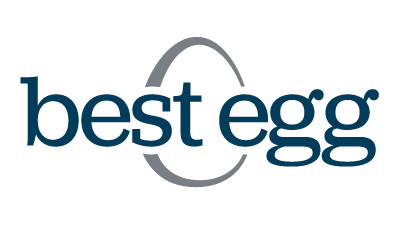
Credible Rating>
Credible lender ratings are evaluated by our editorial team with the help of our loan operations team. The rating criteria for lenders encompass 78 data points spanning interest rates, loan terms, eligibility requirement transparency, repayment options, fees, discounts, customer service, cosigner options, and more. Read our full methodology.
View details>
4.99% – 35.99% APR$5,000 to $35,0006002, 3, 4, 5Fixed APR:
4.99% – 35.99% APRVariable APR:
N/AMin. credit score:
600Loan amount:
$2,000 to $50,000Loan terms (years):
2, 3, 4, 5Time to fund:
As soon as 1 – 3 business days after successful verificationFees:
Origination feeDiscounts:
NoneEligibility:
Available in all states except DC, IA, VT, and WVCustomer service:
PhoneSoft credit check:
YesLoan servicer:
Best Egg and Blue Ridge BankMin. Income:
NoneLoan Uses:
Credit card refinancing, debt consolidation, home improvement, and other purposes
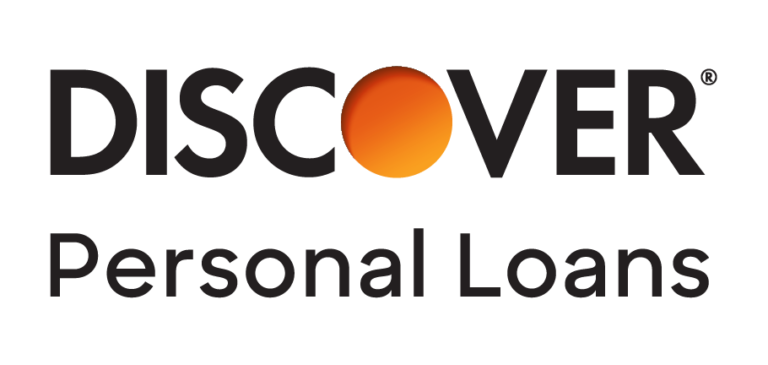
Credible Rating>
Credible lender ratings are evaluated by our editorial team with the help of our loan operations team. The rating criteria for lenders encompass 78 data points spanning interest rates, loan terms, eligibility requirement transparency, repayment options, fees, discounts, customer service, cosigner options, and more. Read our full methodology.
View details>
6.99% – 24.99% APR$2,500 to $35,0006603, 4, 5, 6, 7Fixed APR:
6.99% – 24.99% APRMin. credit score:
660Loan amount:
$2,500 to $35,000Loan terms (years):
3, 4, 5, 6, 7Time to fund:
As soon as the next business day after acceptanceFees:
Late feeDiscounts:
NoneEligibility:
Available in all 50 statesCustomer service:
PhoneSoft credit check:
YesLoan Uses:
Auto repair, credit card refinancing, debt consolidation, home remodel or repair, major purchase, medical expenses, taxes, vacation, and wedding

Credible Rating>
Credible lender ratings are evaluated by our editorial team with the help of our loan operations team. The rating criteria for lenders encompass 78 data points spanning interest rates, loan terms, eligibility requirement transparency, repayment options, fees, discounts, customer service, cosigner options, and more. Read our full methodology.
View details>
7.99% – 29.99% APR$10,000 to $50,000Not disclosed by lender2, 3, 4, 5Fixed APR:
7.99% – 29.99% APRMin. credit score:
Does not discloseLoan amount:
$10,000 to $50,000Loan terms (years):
2, 3, 4, 5Time to fund:
As soon as 2 business daysFees:
Origination feeDiscounts:
NoEligibility:
Available in all states except CO, CT, HI, KS, NH, NY, ND, OR, VT, WV, WI, and WYCustomer service:
PhoneSoft credit check:
YesMin. Income:
NoneLoan Uses:
Debt consolidation, home improvement, wedding, travel, medical expenses, and other purposes

Credible Rating>
Credible lender ratings are evaluated by our editorial team with the help of our loan operations team. The rating criteria for lenders encompass 78 data points spanning interest rates, loan terms, eligibility requirement transparency, repayment options, fees, discounts, customer service, cosigner options, and more. Read our full methodology.
View details>
7.04% – 35.89% APR$1,000 to $40,0006003, 5Fixed APR:
7.04% – 35.89% APRMin. credit score:
600Loan amount:
$1,000 to $40,000Loan terms (years):
3, 5Time to fund:
Usually takes about 2 daysFees:
Origination feeDiscounts:
NoneEligibility:
Available in all 50 statesCustomer service:
Phone, emailSoft credit check:
YesLoan servicer:
LendingClub BankMin. Income:
NoneLoan Uses:
Debt consolidation, paying off credit cards, home improvement, pool loans, vacations, and other purposes
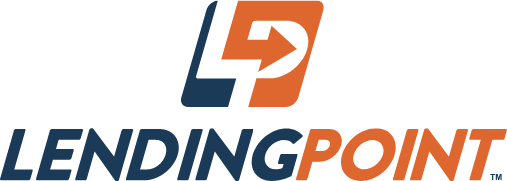
Credible Rating>
Credible lender ratings are evaluated by our editorial team with the help of our loan operations team. The rating criteria for lenders encompass 78 data points spanning interest rates, loan terms, eligibility requirement transparency, repayment options, fees, discounts, customer service, cosigner options, and more. Read our full methodology.
View details>
15.49% – 35.99% APR$2,000 to $36,5005802, 3, 4Fixed APR:
15.49% – 35.99% APRMin. credit score:
580Loan amount:
$2,000 to $36,500Loan terms (years):
2, 3, 4Time to fund:
As soon as the next business dayFees:
Origination feeDiscounts:
AutopayEligibility:
Available in all states except NV and WVCustomer service:
Phone, emailSoft credit check:
YesMin. Income:
$20,000Loan Uses:
Home improvement, consolidate debt, credit card refinancing, relocate, make a large purchase, and other purposes

Credible Rating>
Credible lender ratings are evaluated by our editorial team with the help of our loan operations team. The rating criteria for lenders encompass 78 data points spanning interest rates, loan terms, eligibility requirement transparency, repayment options, fees, discounts, customer service, cosigner options, and more. Read our full methodology.
View details>
2.49% – 19.99% APR$5,000 to $100,0006602, 3, 4, 5, 6, 7
(up to 12 years for home improvement loans)Fixed APR:
2.49% – 19.99% APRMin. credit score:
660Loan amount:
$5,000 to $100,000Loan terms (years):
2, 3, 4, 5, 6, 7*Time to fund:
As soon as the same business dayFees:
NoneDiscounts:
AutopayEligibility:
Available in all states except RI and VTCustomer service:
Phone, emailSoft credit check:
NoLoan servicer:
LightStreamMin. Income:
Does not discloseLoan Uses:
Credit card refinancing, debt consolidation, home improvement, and other purposes
Credible Rating>
Credible lender ratings are evaluated by our editorial team with the help of our loan operations team. The rating criteria for lenders encompass 78 data points spanning interest rates, loan terms, eligibility requirement transparency, repayment options, fees, discounts, customer service, cosigner options, and more. Read our full methodology.
View details>
6.99% – 19.99% APR1$3,500 to $40,0002660
(TransUnion FICO®️ Score 9)3, 4, 5, 6, 7Fixed APR:
6.99% – 19.99% APR1Min. credit score:
660
(TransUnion FICO®️ Score 9)Loan amount:
$3,500 to $40,0002Loan terms (years):
3, 4, 5, 6Time to fund:
Many Marcus customers receive funds in as little as three daysFees:
NoneDiscounts:
AutopayEligibility:
Available in all 50 statesCustomer service:
PhoneSoft credit check:
YesLoan servicer:
Goldman SachsMin. Income:
$30,000Loan Uses:
Credit card refinancing, debt consolidation, home improvement, major purchase, and other purposes
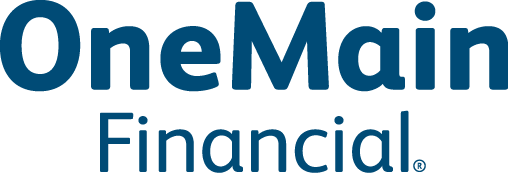
Credible Rating>
Credible lender ratings are evaluated by our editorial team with the help of our loan operations team. The rating criteria for lenders encompass 78 data points spanning interest rates, loan terms, eligibility requirement transparency, repayment options, fees, discounts, customer service, cosigner options, and more. Read our full methodology.
View details>
18.0% – 35.99% APR$1,500 to $20,000None2, 3, 4, 5Fixed APR:
18.0% – 35.99% APRMin. credit score:
NoneLoan amount:
$1,500 to $20,000Loan terms (years):
2, 3, 4, 5Time to fund:
As soon as the same day, but usually requires a visit to a branch officeFees:
Origination feeDiscounts:
NoneEligibility:
Must have photo I.D. issued by U.S. federal, state or local governmentCustomer service:
Phone, emailSoft credit check:
YesMin. Income:
Does not disclose

Credible Rating>
Credible lender ratings are evaluated by our editorial team with the help of our loan operations team. The rating criteria for lenders encompass 78 data points spanning interest rates, loan terms, eligibility requirement transparency, repayment options, fees, discounts, customer service, cosigner options, and more. Read our full methodology.
View details>
5.99% – 17.99% APR$600 to $50,000
(depending on loan term)6701, 2, 3, 4, 5Fixed APR:
5.99% – 17.99% APRMin. credit score:
670Loan amount:
$600 to $50,000*Loan terms (years):
1, 2, 3, 4, 5Time to fund:
2 to 4 business days after verificationFees:
NoneDiscounts:
NoneEligibility:
Does not discloseCustomer service:
Phone, emailSoft credit check:
NoMin. Income:
Does not discloseLoan Uses:
Debt consolidation, home improvement, transportation, medical, dental, life events

Credible Rating>
Credible lender ratings are evaluated by our editorial team with the help of our loan operations team. The rating criteria for lenders encompass 78 data points spanning interest rates, loan terms, eligibility requirement transparency, repayment options, fees, discounts, customer service, cosigner options, and more. Read our full methodology.
View details>
6.95% – 35.99% APR$2,000 to $40,0006403, 5Fixed APR:
6.95% – 35.99% APRMin. credit score:
640Loan amount:
$2,000 to $40,000Loan terms (years):
3, 5Time to fund:
As soon as one business dayFees:
Origination feeDiscounts:
NoneEligibility:
Available in all states except IA, ND, WVCustomer service:
Phone, emailSoft credit check:
YesMin. Income:
NoneLoan Uses:
Debt consolidation, home improvement, vehicles, small business, new baby expenses, and other purposes

Credible Rating>
Credible lender ratings are evaluated by our editorial team with the help of our loan operations team. The rating criteria for lenders encompass 78 data points spanning interest rates, loan terms, eligibility requirement transparency, repayment options, fees, discounts, customer service, cosigner options, and more. Read our full methodology.
View details>
5.99% – 18.83% APR$5,000 to $100,000Does not disclose2, 3, 4, 5, 6, 7Fixed APR:
5.99% – 18.83% APRMin. credit score:
Does not discloseLoan amount:
$5,000 to $100,000Loan terms (years):
2, 3, 4, 5, 6, 7Time to fund:
3 business daysFees:
NoneDiscounts:
AutopayEligibility:
Available in all states except MSCustomer service:
Phone, emailSoft credit check:
YesMin. Income:
Does not discloseLoan Uses:
Solely for personal, family, or household uses

Credible Rating>
Credible lender ratings are evaluated by our editorial team with the help of our loan operations team. The rating criteria for lenders encompass 78 data points spanning interest rates, loan terms, eligibility requirement transparency, repayment options, fees, discounts, customer service, cosigner options, and more. Read our full methodology.
View details>
8.93% – 35.93% APR7$1,000 to $50,0005603 to 5 years 8Fixed APR:
8.93% – 35.93% APR7Min. credit score:
560Loan amount:
$1,000 to $50,000Loan terms:
3 to 5 years 8Time to fund:
Within one day, once approved9Loan types:
Debt consolidation, pay off credit cards, home improvements, unexpected expenses, home and auto repairs, weddings, and other major purchasesFees:
Origination feeDiscounts:
AutopayEligibility:
A U.S. citizen or permanent resident; not available in DC, SC, WVCustomer service:
Phone, emailSoft credit check:
Yes

Credible Rating>
Credible lender ratings are evaluated by our editorial team with the help of our loan operations team. The rating criteria for lenders encompass 78 data points spanning interest rates, loan terms, eligibility requirement transparency, repayment options, fees, discounts, customer service, cosigner options, and more. Read our full methodology.
View details>
5.94% – 35.97% APR$1,000 to $50,0005602, 3, 5, 6Fixed APR:
5.94% – 35.97% APRMin. credit score:
560Loan amount:
$1,000 to $50,000*Loan terms (years):
2, 3, 5, 6Time to fund:
Within a day of clearing necessary verificationsFees:
Origination feeDiscounts:
AutopayEligibility:
Available in all states except West VirginiaCustomer service:
EmailSoft credit check:
YesMin. Income:
Does not discloseLoan Uses:
Debt consolidation, credit card refinancing, home improvement, and other purposes

Credible Rating>
Credible lender ratings are evaluated by our editorial team with the help of our loan operations team. The rating criteria for lenders encompass 78 data points spanning interest rates, loan terms, eligibility requirement transparency, repayment options, fees, discounts, customer service, cosigner options, and more. Read our full methodology.
View details>
6.46% – 35.99% APR4$1,000 to $50,00055803 to 5 years4Fixed APR:
6.46% – 35.99% APR4Min. credit score:
580Loan amount:
$1,000 to $50,0005Loan terms (years):
3 to 5 years4Time to fund:
As fast as 1 business day6Fees:
Origination feeDiscounts:
NoneEligibility:
Available in all 50 statesCustomer service:
Phone, emailSoft credit check:
YesMin. Income:
$12,000Loan Uses:
Payoff credit cards, consolidate debt, take a course or bootcamp, relocate, make a large purchase, and other purposesCompare rates from these lenders without affecting your credit score. 100% free!
Compare Now
Trustpilot
All APRs reflect autopay and loyalty discounts where available | LightStream disclosure | Read more about Rates and Terms
Should you close your credit card?
After you’ve paid off a credit card, you might consider closing it. However, keep in mind that if you close a credit card account, you might see your credit score drop. This is because a closed account could:
Raise your credit utilization ratio, as you might have less available credit compared to how much you oweLower the average age of your credit accounts, especially if you’ve had the account for an extended period of time
However, if you continue making payments on time on your other credit accounts, your score will likely bounce back within a few months.
Tip: Ultimately, whether to close an account depends on your individual circumstances. For example, if you feel that keeping a credit card account open could lead you into more debt, then it might be better to close the account and deal with the potential credit score changes.
Keep Reading: Pay Off Credit Card Debt ASAP With a Personal Loan
About Rates and Terms: Rates for personal loans provided by lenders on the Credible platform range between 4.99-35.99% APR with terms from 12 to 84 months. Rates presented include lender discounts for enrolling in autopay and loyalty programs, where applicable. Actual rates may be different from the rates advertised and/or shown and will be based on the lender’s eligibility criteria, which include factors such as credit score, loan amount, loan term, credit usage and history, and vary based on loan purpose. The lowest rates available typically require excellent credit, and for some lenders, may be reserved for specific loan purposes and/or shorter loan terms. The origination fee charged by the lenders on our platform ranges from 0% to 8%. Each lender has their own qualification criteria with respect to their autopay and loyalty discounts (e.g., some lenders require the borrower to elect autopay prior to loan funding in order to qualify for the autopay discount). All rates are determined by the lender and must be agreed upon between the borrower and the borrower’s chosen lender. For a loan of $10,000 with a three year repayment period, an interest rate of 7.99%, a $350 origination fee and an APR of 11.51%, the borrower will receive $9,650 at the time of loan funding and will make 36 monthly payments of $313.32. Assuming all on-time payments, and full performance of all terms and conditions of the loan contract and any discount programs enrolled in included in the APR/interest rate throughout the life of the loan, the borrower will pay a total of $11,279.43. As of March 12, 2019, none of the lenders on our platform require a down payment nor do they charge any prepayment penalties.
The post How to Lower Credit Card Interest Rates: 4 Options appeared first on Credible.
How to Pay Off $10,000 in Credit Card Debt
Facing a large amount of credit card debt can feel overwhelming, especially since it might take a while to pay off. If you have $10,000 in credit card debt, it could take over a decade to repay if you make only minimum payments.
However, there are a few strategies that could make it easier to pay off $10,000 in credit card debt.
Here are four ways to pay off $10,000 in credit card debt:
Consolidate your debtWork with your credit card companyChoose a debt payoff strategyReevaluate your current spending
1. Consolidate your debt
Depending on your credit, consolidating your credit card debt might get you a lower interest rate — this could save you money on interest as well as potentially help you pay off your debt more quickly.
Here are a few options for consolidating credit card debt:
Take out a credit card consolidation loan
Best if: You have multiple high-interest credit cards to consolidate.
A credit card consolidation loan is a type of personal loan specifically used to consolidate credit card debt. If you have good to excellent credit, you might qualify for a lower interest rate than what you’re currently paying — this could save you hundreds or even thousands of dollars on interest charges.
Or you could opt to extend your repayment term to lower your monthly payments and lessen the strain on your budget. Just keep in mind that choosing a longer term means you’ll pay more in interest over time.
For example, here’s how much someone might save by consolidating their credit card debt with a personal loan:
Pros
Fixed rates: Personal loan rates are fixed, which means your payments will stay the same throughout the life of the loan. Additionally, personal loans usually have lower interest rates compared to credit cards.Could get a lower interest rate: If you have good credit, you might get a lower interest rate with a credit card consolidation loan.Fast loan process: Many personal loan lenders provide a quick and easy application process. If you’re approved, you’ll generally have your funds within a week — though some lenders will fund loans as soon as the same or next business day after approval.
Cons
Fewer options for poor or fair credit: You’ll typically need good to excellent credit to qualify for a personal loan — especially if you want to get a lower interest rate. There are also several lenders that offer personal loans for bad credit, but these loans usually come with higher interest rates compared to good credit loans.Might come with fees: Some lenders charge fees on personal loans, such as origination or late fees.No perks or rewards: Personal loans don’t offer the perks and rewards that sometimes come with credit cards.Tip: If you have bad credit and are struggling to get approved for a personal loan, consider applying with a creditworthy cosigner to improve your chances. Not all lenders allow cosigners on personal loans, but some do.
Even if you don’t need a cosigner to qualify, having one might get you a lower interest rate than you’d get on your own.
If you decide to take out a personal loan to consolidate credit card debt, be sure to consider as many lenders as possible to find the right loan for your needs.
Credible makes this easy — you can compare your prequalified rates from our partner lenders in the table below in two minutes.
LenderFixed ratesLoan amountsMin. credit scoreLoan terms (years)

Credible Rating>
Credible lender ratings are evaluated by our editorial team with the help of our loan operations team. The rating criteria for lenders encompass 78 data points spanning interest rates, loan terms, eligibility requirement transparency, repayment options, fees, discounts, customer service, cosigner options, and more. Read our full methodology.
View details>
9.95% – 35.99% APR$2,000 to $35,0005502, 3, 4, 5*Fixed APR:
9.95% – 35.99% APRVariable APR:
N/AMin. credit score:
550Loan amount:
$2,000 to $35,000**Loan terms (years):
2, 3, 4, 5*Time to fund:
As soon as the next business day (if approved by 4:30 p.m. CT on a weekday)Fees:
Origination feeDiscounts:
AutopayEligibility:
Available in all states except CO, IA, HI, VT, NV NY, WVCustomer service:
Phone, emailSoft credit check:
YesLoan servicer:
AvantLoan Uses:
Debt consolidation, emergency expense, life event, home improvement, and other purposesMin. Income:
$1,200 monthly

Credible Rating>
Credible lender ratings are evaluated by our editorial team with the help of our loan operations team. The rating criteria for lenders encompass 78 data points spanning interest rates, loan terms, eligibility requirement transparency, repayment options, fees, discounts, customer service, cosigner options, and more. Read our full methodology.
View details>
6.79% – 17.99% APR$5,000 to $35,0007401, 2, 3, 4, 5Fixed APR:
6.79% – 17.99% APRVariable APR:
N/AMin. credit score:
740Loan amount:
$5,000 to $35,000Loan terms (years):
1, 2, 3, 4, 5Time to fund:
Next business dayFees:
No prepayment penaltyDiscounts:
NoneEligibility:
Available in all 50 statesCustomer service:
PhoneSoft credit check:
YesMin. Income:
Does not discloseLoan Uses:
Debt consolidation, home improvement, self-employment, and other purposes
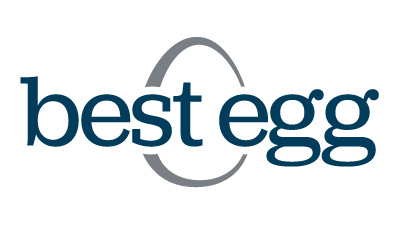
Credible Rating>
Credible lender ratings are evaluated by our editorial team with the help of our loan operations team. The rating criteria for lenders encompass 78 data points spanning interest rates, loan terms, eligibility requirement transparency, repayment options, fees, discounts, customer service, cosigner options, and more. Read our full methodology.
View details>
4.99% – 35.99% APR$2,000 to $50,0006003, 5Fixed APR:
4.99% – 35.99% APRVariable APR:
N/AMin. credit score:
600Loan amount:
$2,000 to $50,000Loan terms (years):
2, 3, 4, 5Time to fund:
As soon as 1 – 3 business days after successful verificationFees:
Origination feeDiscounts:
NoneEligibility:
Available in all states except DC, IA, VT, and WVCustomer service:
PhoneSoft credit check:
YesLoan servicer:
Best Egg and Blue Ridge BankMin. Income:
NoneLoan Uses:
Credit card refinancing, debt consolidation, home improvement, and other purposes
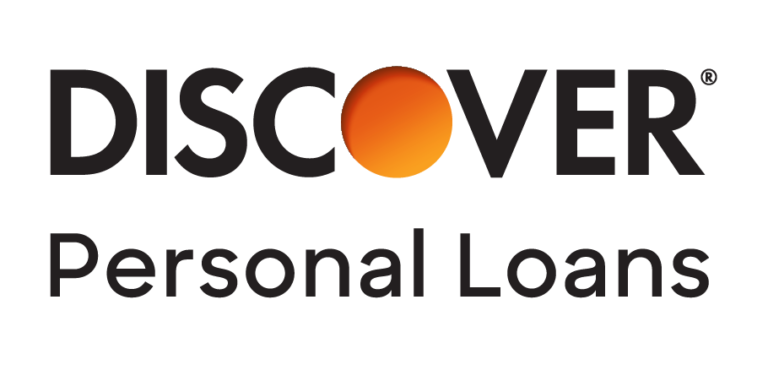
Credible Rating>
Credible lender ratings are evaluated by our editorial team with the help of our loan operations team. The rating criteria for lenders encompass 78 data points spanning interest rates, loan terms, eligibility requirement transparency, repayment options, fees, discounts, customer service, cosigner options, and more. Read our full methodology.
View details>
6.99% – 24.99% APR$2,500 to $35,0006603, 4, 5, 6, 7Fixed APR:
6.99% – 24.99% APRMin. credit score:
660Loan amount:
$2,500 to $35,000Loan terms (years):
3, 4, 5, 6, 7Time to fund:
As soon as the next business day after acceptanceFees:
Late feeDiscounts:
NoneEligibility:
Available in all 50 statesCustomer service:
PhoneSoft credit check:
YesLoan Uses:
Auto repair, credit card refinancing, debt consolidation, home remodel or repair, major purchase, medical expenses, taxes, vacation, and wedding

Credible Rating>
Credible lender ratings are evaluated by our editorial team with the help of our loan operations team. The rating criteria for lenders encompass 78 data points spanning interest rates, loan terms, eligibility requirement transparency, repayment options, fees, discounts, customer service, cosigner options, and more. Read our full methodology.
View details>
7.99% – 29.99% APR$10,000 to $35,000Not disclosed by lender2, 3, 4, 5Fixed APR:
7.99% – 29.99% APRMin. credit score:
Does not discloseLoan amount:
$10,000 to $50,000Loan terms (years):
2, 3, 4, 5Time to fund:
As soon as 2 business daysFees:
Origination feeDiscounts:
NoEligibility:
Available in all states except CO, CT, HI, KS, NH, NY, ND, OR, VT, WV, WI, and WYCustomer service:
PhoneSoft credit check:
YesMin. Income:
NoneLoan Uses:
Debt consolidation, home improvement, wedding, travel, medical expenses, and other purposes

Credible Rating>
Credible lender ratings are evaluated by our editorial team with the help of our loan operations team. The rating criteria for lenders encompass 78 data points spanning interest rates, loan terms, eligibility requirement transparency, repayment options, fees, discounts, customer service, cosigner options, and more. Read our full methodology.
View details>
7.04% – 35.89% APR$1,000 to $40,0006003, 5Fixed APR:
7.04% – 35.89% APRMin. credit score:
600Loan amount:
$1,000 to $40,000Loan terms (years):
3, 5Time to fund:
Usually takes about 2 daysFees:
Origination feeDiscounts:
NoneEligibility:
Available in all 50 statesCustomer service:
Phone, emailSoft credit check:
YesLoan servicer:
LendingClub BankMin. Income:
NoneLoan Uses:
Debt consolidation, paying off credit cards, home improvement, pool loans, vacations, and other purposes
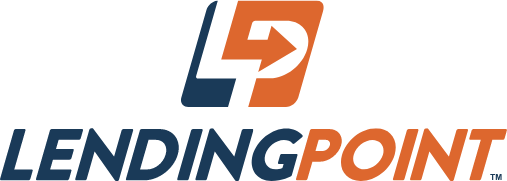
Credible Rating>
Credible lender ratings are evaluated by our editorial team with the help of our loan operations team. The rating criteria for lenders encompass 78 data points spanning interest rates, loan terms, eligibility requirement transparency, repayment options, fees, discounts, customer service, cosigner options, and more. Read our full methodology.
View details>
15.49% – 35.99% APR$2,000 to $36,5005802, 3, 4Fixed APR:
15.49% – 35.99% APRMin. credit score:
580Loan amount:
$2,000 to $36,500Loan terms (years):
2, 3, 4Time to fund:
As soon as the next business dayFees:
Origination feeDiscounts:
AutopayEligibility:
Available in all states except NV and WVCustomer service:
Phone, emailSoft credit check:
YesMin. Income:
$20,000Loan Uses:
Home improvement, consolidate debt, credit card refinancing, relocate, make a large purchase, and other purposes

Credible Rating>
Credible lender ratings are evaluated by our editorial team with the help of our loan operations team. The rating criteria for lenders encompass 78 data points spanning interest rates, loan terms, eligibility requirement transparency, repayment options, fees, discounts, customer service, cosigner options, and more. Read our full methodology.
View details>
2.49% – 19.99% APR$5,000 to $100,0006602, 3, 4, 5, 6, 7
(up to 12 years for home improvement loans)Fixed APR:
2.49% – 19.99% APRMin. credit score:
660Loan amount:
$5,000 to $100,000Loan terms (years):
2, 3, 4, 5, 6, 7*Time to fund:
As soon as the same business dayFees:
NoneDiscounts:
AutopayEligibility:
Available in all states except RI and VTCustomer service:
Phone, emailSoft credit check:
NoLoan servicer:
LightStreamMin. Income:
Does not discloseLoan Uses:
Credit card refinancing, debt consolidation, home improvement, and other purposes
Credible Rating>
Credible lender ratings are evaluated by our editorial team with the help of our loan operations team. The rating criteria for lenders encompass 78 data points spanning interest rates, loan terms, eligibility requirement transparency, repayment options, fees, discounts, customer service, cosigner options, and more. Read our full methodology.
View details>
6.99% – 19.99% APR1$3,500 to $40,0002660
(TransUnion FICO®️ Score 9)3, 4, 5, 6, 7Fixed APR:
6.99% – 19.99% APR1Min. credit score:
660
(TransUnion FICO®️ Score 9)Loan amount:
$3,500 to $40,0002Loan terms (years):
3, 4, 5, 6Time to fund:
Many Marcus customers receive funds in as little as three daysFees:
NoneDiscounts:
AutopayEligibility:
Available in all 50 statesCustomer service:
PhoneSoft credit check:
YesLoan servicer:
Goldman SachsMin. Income:
$30,000Loan Uses:
Credit card refinancing, debt consolidation, home improvement, major purchase, and other purposes
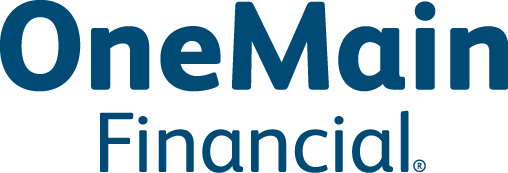
Credible Rating>
Credible lender ratings are evaluated by our editorial team with the help of our loan operations team. The rating criteria for lenders encompass 78 data points spanning interest rates, loan terms, eligibility requirement transparency, repayment options, fees, discounts, customer service, cosigner options, and more. Read our full methodology.
View details>
18.0% – 35.99% APR$1,500 to $20,000None2, 3, 4, 5Fixed APR:
18.0% – 35.99% APRMin. credit score:
NoneLoan amount:
$1,500 to $20,000Loan terms (years):
2, 3, 4, 5Time to fund:
As soon as the same day, but usually requires a visit to a branch officeFees:
Origination feeDiscounts:
NoneEligibility:
Must have photo I.D. issued by U.S. federal, state or local governmentCustomer service:
Phone, emailSoft credit check:
YesMin. Income:
Does not disclose

Credible Rating>
Credible lender ratings are evaluated by our editorial team with the help of our loan operations team. The rating criteria for lenders encompass 78 data points spanning interest rates, loan terms, eligibility requirement transparency, repayment options, fees, discounts, customer service, cosigner options, and more. Read our full methodology.
View details>
5.99% – 24.99% APR$5,000 to $40,0006002, 3, 4, 5Fixed APR:
5.99% – 24.99% APRMin. credit score:
600Loan amount:
$5,000 to $40,000Loan terms (years):
2, 3, 4, 5Time to fund:
As soon as 2 – 5 business days after verificationFees:
Origination feeDiscounts:
NoneEligibility:
Available in all states except MA, NV, and OHCustomer service:
Phone, email, chatSoft credit check:
YesMin. Income:
NoneLoan Uses:
Debt consolidation and credit card consolidation only

Credible Rating>
Credible lender ratings are evaluated by our editorial team with the help of our loan operations team. The rating criteria for lenders encompass 78 data points spanning interest rates, loan terms, eligibility requirement transparency, repayment options, fees, discounts, customer service, cosigner options, and more. Read our full methodology.
View details>
5.99% – 17.99% APR$600 to $50,000
(depending on loan term)6701, 2, 3, 4, 5Fixed APR:
5.99% – 17.99% APRMin. credit score:
670Loan amount:
$600 to $50,000*Loan terms (years):
1, 2, 3, 4, 5Time to fund:
2 to 4 business days after verificationFees:
NoneDiscounts:
NoneEligibility:
Does not discloseCustomer service:
Phone, emailSoft credit check:
NoMin. Income:
Does not discloseLoan Uses:
Debt consolidation, home improvement, transportation, medical, dental, life events

Credible Rating>
Credible lender ratings are evaluated by our editorial team with the help of our loan operations team. The rating criteria for lenders encompass 78 data points spanning interest rates, loan terms, eligibility requirement transparency, repayment options, fees, discounts, customer service, cosigner options, and more. Read our full methodology.
View details>
6.95% – 35.99% APR$2,000 to $40,0006403, 5Fixed APR:
6.95% – 35.99% APRMin. credit score:
640Loan amount:
$2,000 to $40,000Loan terms (years):
3, 5Time to fund:
As soon as one business dayFees:
Origination feeDiscounts:
NoneEligibility:
Available in all states except IA, ND, WVCustomer service:
Phone, emailSoft credit check:
YesMin. Income:
NoneLoan Uses:
Debt consolidation, home improvement, vehicles, small business, new baby expenses, and other purposes

Credible Rating>
Credible lender ratings are evaluated by our editorial team with the help of our loan operations team. The rating criteria for lenders encompass 78 data points spanning interest rates, loan terms, eligibility requirement transparency, repayment options, fees, discounts, customer service, cosigner options, and more. Read our full methodology.
View details>
5.99% – 18.83% APR$5,000 to $100,000Does not disclose2, 3, 4, 5, 6, 7Fixed APR:
5.99% – 18.83% APRMin. credit score:
Does not discloseLoan amount:
$5,000 to $100,000Loan terms (years):
2, 3, 4, 5, 6, 7Time to fund:
3 business daysFees:
NoneDiscounts:
AutopayEligibility:
Available in all states except MSCustomer service:
Phone, emailSoft credit check:
YesMin. Income:
Does not discloseLoan Uses:
Solely for personal, family, or household uses

Credible Rating>
Credible lender ratings are evaluated by our editorial team with the help of our loan operations team. The rating criteria for lenders encompass 78 data points spanning interest rates, loan terms, eligibility requirement transparency, repayment options, fees, discounts, customer service, cosigner options, and more. Read our full methodology.
View details>
8.93% – 35.93% APR7$1,000 to $20,0005603, 5Fixed APR:
8.93% – 35.93% APR7Min. credit score:
560Loan amount:
$1,000 to $50,000Loan terms:
3 to 5 years 8Time to fund:
Within one day, once approved9Loan types:
Debt consolidation, pay off credit cards, home improvements, unexpected expenses, home and auto repairs, weddings, and other major purchasesFees:
Origination feeDiscounts:
AutopayEligibility:
A U.S. citizen or permanent resident; not available in DC, SC, WVCustomer service:
Phone, emailSoft credit check:
Yes

Credible Rating>
Credible lender ratings are evaluated by our editorial team with the help of our loan operations team. The rating criteria for lenders encompass 78 data points spanning interest rates, loan terms, eligibility requirement transparency, repayment options, fees, discounts, customer service, cosigner options, and more. Read our full methodology.
View details>
5.94% – 35.97% APR$1,000 to $50,0005602, 3, 5, 6Fixed APR:
5.94% – 35.97% APRMin. credit score:
560Loan amount:
$1,000 to $50,000*Loan terms (years):
2, 3, 5, 6Time to fund:
Within a day of clearing necessary verificationsFees:
Origination feeDiscounts:
AutopayEligibility:
Available in all states except West VirginiaCustomer service:
EmailSoft credit check:
YesMin. Income:
Does not discloseLoan Uses:
Debt consolidation, credit card refinancing, home improvement, and other purposes

Credible Rating>
Credible lender ratings are evaluated by our editorial team with the help of our loan operations team. The rating criteria for lenders encompass 78 data points spanning interest rates, loan terms, eligibility requirement transparency, repayment options, fees, discounts, customer service, cosigner options, and more. Read our full methodology.
View details>
6.46% – 35.99% APR4$1,000 to $50,00055803 to 5 years4Fixed APR:
6.46% – 35.99% APR4Min. credit score:
580Loan amount:
$1,000 to $50,0005Loan terms (years):
3 to 5 years4Time to fund:
As fast as 1 business day6Fees:
Origination feeDiscounts:
NoneEligibility:
Available in all 50 statesCustomer service:
Phone, emailSoft credit check:
YesMin. Income:
$12,000Loan Uses:
Payoff credit cards, consolidate debt, take a course or bootcamp, relocate, make a large purchase, and other purposesCompare rates from these lenders without affecting your credit score. 100% free!
Compare Now
Trustpilot
All APRs reflect autopay and loyalty discounts where available | LightStream disclosure | Read more about Rates and Terms
Use a balance transfer card
Best if: You plan to pay off your balance quickly.
Another option for consolidating credit card debt is a balance transfer. This process lets you move your balance from one credit card to another.
Some balance transfer cards come with a 0% APR introductory offer, which means you could avoid paying interest if you can repay your debt before this period ends — usually within nine to 21 months, depending on the card.
However, if you can’t pay off your debt in time, you could stick with some hefty interest charges.
Pros
0% APR offer: Depending on the card you choose, you might be able to take advantage of a 0% APR introductory period and avoid paying interest for a certain period of time. This could be especially helpful if you plan to repay your balance quickly.Could help establish credit history: If you keep the balance transfer card open after paying off your initial debt, you can continue to use it to build your positive payment history and improve your credit.Might offer rewards or other perks: Some balance transfer cards provide various rewards or perks, such as cash back or travel points.
Cons
Might come with fees: In many cases, you’ll have to pay a balance transfer fee. This can range from 3% to 5% of the balance you want to transfer.Could come with high interest charges: If you don’t choose a card with a 0% APR introductory offer or can’t pay off your balance before this period ends, you could end up paying a large amount of interest.Might lead to further debt: Although a balance transfer card could help you manage your debt, it’s still another credit card — for some borrowers, it might be tempting to rack up a balance again.
Learn More: Refinancing Credit Card Debt and Getting Approved: Guide
Tap into your home’s equity
Best if: You own a home with at least 15% to 20% equity.
If you’re a homeowner, you might be able to tap into your home’s equity with a home equity loan or home equity line of credit (HELOC) and use the funds to consolidate your credit card debt.
With a home equity loan, you’ll get a lump sum that you can use how you wish.With a HELOC, you’ll have access to a revolving credit line that you can repeatedly draw on and pay off.
Because these loans are secured by your home, they often come with lower interest rates compared to credit cards or personal loans.
However, keep in mind that if you can’t keep up with your payments, you risk losing your house.
Pros
Lower interest rates: Because there’s less risk to the lender, home equity loans and HELOCs tend to have lower interest rates than credit cards or personal loans.Long repayment term: You could have five to 30 years to repay a home equity loan or up to 20 years to pay off a HELOC.Can use funds for any purpose: You can use the funds from a home equity loan or HELOC for almost any purpose. This could be helpful if you have other expenses to cover in addition to your credit card debt.
Cons
Risk of foreclosure: If you can’t make your payments on a home equity loan or HELOC, the lender could seize your home.Closing costs: Home equity loans and HELOCs can come with similar closing costs as a traditional mortgage — often 2% to 5%.Longer process: Depending on the complexity of the loan, it could take a few weeks for your loan to be processed and funded.
Check Out: Home Equity Loan vs. Personal Loan: Which Is Right for You?
2. Work with your credit card company
In some cases, you might be able to work out an arrangement with your credit card company that could help you tackle your debt. Here are a few options to consider:
sk your credit card company about a hardship plan
Best if: Your account is in good standing.
If your credit card payments are becoming too difficult to manage, it’s a good idea to call your card company to see if any assistance is available to you.
For example, several credit card companies offer hardship plans, which often provide a lower interest rate, reduced monthly payments, and lower fees.
Generally, credit card companies prefer to work with long-time customers who haven’t missed any payments. If you think you might not be able to make a payment, be sure to reach out to your card issuer as soon as possible.
Pros
Could lower your interest rate: A hardship plan could temporarily provide more optimal terms, such as a lower interest rate.Fixed repayment: Hardship plans usually come with fixed repayment schedules, which could make it easier to budget for your payments.Maintain good standing: If you reach out to your credit card company before you miss any payments, you’ll have a better chance of keeping your account in good standing with the company.
Cons
Might hurt your credit: Your card issuer might suspend or close your account for the duration of the hardship plan, which could lead to a decrease in your credit score.Could make it hard to access more credit: If your card issuer reports your hardship plan to the credit bureaus, you might have a harder time qualifying for other loans and credit in the future.Can’t combine multiple cards: If you have debt on multiple credit cards and want to sign up for a hardship plan, you’ll need to contact each card issuer individually.
Learn More: Coronavirus Hardship Loans: 7 Options to Consider
Try to negotiate a debt settlement
Best if: You have a sum of cash that you can use to negotiate a settlement for less than what you owe.
Debt settlement is an arrangement where your credit card company agrees to accept a lump sum or number of payments for less than what you owe in order to settle the account.
You can approach your creditor to discuss settlement on your own, or you could involve one of the several for-profit companies that offer debt settlement services.
Keep in mind: For-profit debt settlement companies often ask you to stop making payments on your accounts while they negotiate with your creditors, which could severely damage your credit.
Pros
Might be able to pay off your debt for less than what you owe: If your card issuer accepts the debt settlement plan, you could pay off your debt for less than what you actually owe.Can be done on your own: While there are several companies that could help you pursue debt settlement, you also have the option to work with your card issuer on your own.Could help you avoid bankruptcy: If you don’t want to file for bankruptcy, debt settlement might be a helpful option.
Cons
Could damage your credit: Your credit report will reflect that you settled an account for less than what you owed, which could hurt your credit. Your credit could also be damaged if you work with a for-profit company and agree to stop making payments.Potential fees: Debt settlement companies usually charge a fee for their services ranging from 20% to 25% of your final settlement amount.Might not work: There’s no guarantee that your card issuer will accept the settlement offer.
Check Out: How to Get Out of Credit Card Debt
Consider a debt management plan
Best if: You want professional guidance on the best way to repay your debt.
If you’re not sure how to tackle your debt, signing up for a debt management plan might be a good idea. With this option, a nonprofit debt counseling agency — such as the National Foundation for Credit Counseling — will help you come to an agreement with your creditors.
Debt management plans typically last for three to five years until your debt is paid off. During this time, you’ll make your payments to the agency, which will send the agreed-upon amounts to your creditors.
Pros
Professional help to manage your debt: Credit counselors offer a variety of resources and educational tools to help you take control of your debt and create good credit habits.Might come with lower interest rate and fees: Your creditors might agree to lower your interest rates and reduce or waive fees if you sign up for a debt management plan.Could improve your credit score: Making on-time payments under a debt management plan could help you build a positive payment history and improve your credit score over time.
Cons
Might close your credit cards: Any credit cards included in a debt management plan will likely have to be closed, meaning you’ll have less access to credit. Additionally, you might not be permitted to apply for new credit for the duration of the plan.Could come with fees: Depending on the agency you choose, you might have to pay upfront and monthly fees.Will have to pay off your debt in full: Unlike with a debt settlement, you’ll have to pay off your full balance on a debt management plan.Tip: Under a debt management plan, you’ll make just one monthly payment — similar to debt consolidation. However, you won’t necessarily be able to get a lower interest rate.
If you have good credit and can qualify for a lower interest rate on a personal loan, consolidating your debt might be a better option if you’re looking to save money on your debt.
Just remember to consider how much a personal loan will cost you before you borrow so you can be prepared for any added expenses.
You can estimate how much you’ll pay for a loan using our personal loan calculator below.
Enter your loan information to calculate how much you could pay
Loan amountEnter the total amount borrowedInterest rateEnter your annual interest rateorLoan termEnter the amount of time you have to repay your loanyears
Total Payment>
Total Interest>
Monthly Payment>
With a>
loan, you will pay>
monthly and a total of>
in interest over the life of your loan. You will pay a total of>
over the life of the
loan.
Need a personal loan?
Compare rates without affecting your credit score. 100% free!
Check Personalized Rates
Checking rates won’t affect your credit score.
3. Choose a debt payoff strategy
If you have multiple cards to pay off, choosing a debt payoff strategy could be helpful. Here are a couple of methods to consider:
Use the debt avalanche method
Best if: You’re motivated by long-term interest savings.
With the debt avalanche method, you’ll focus on paying off your debt with the highest interest rate first.
Here’s how it works:
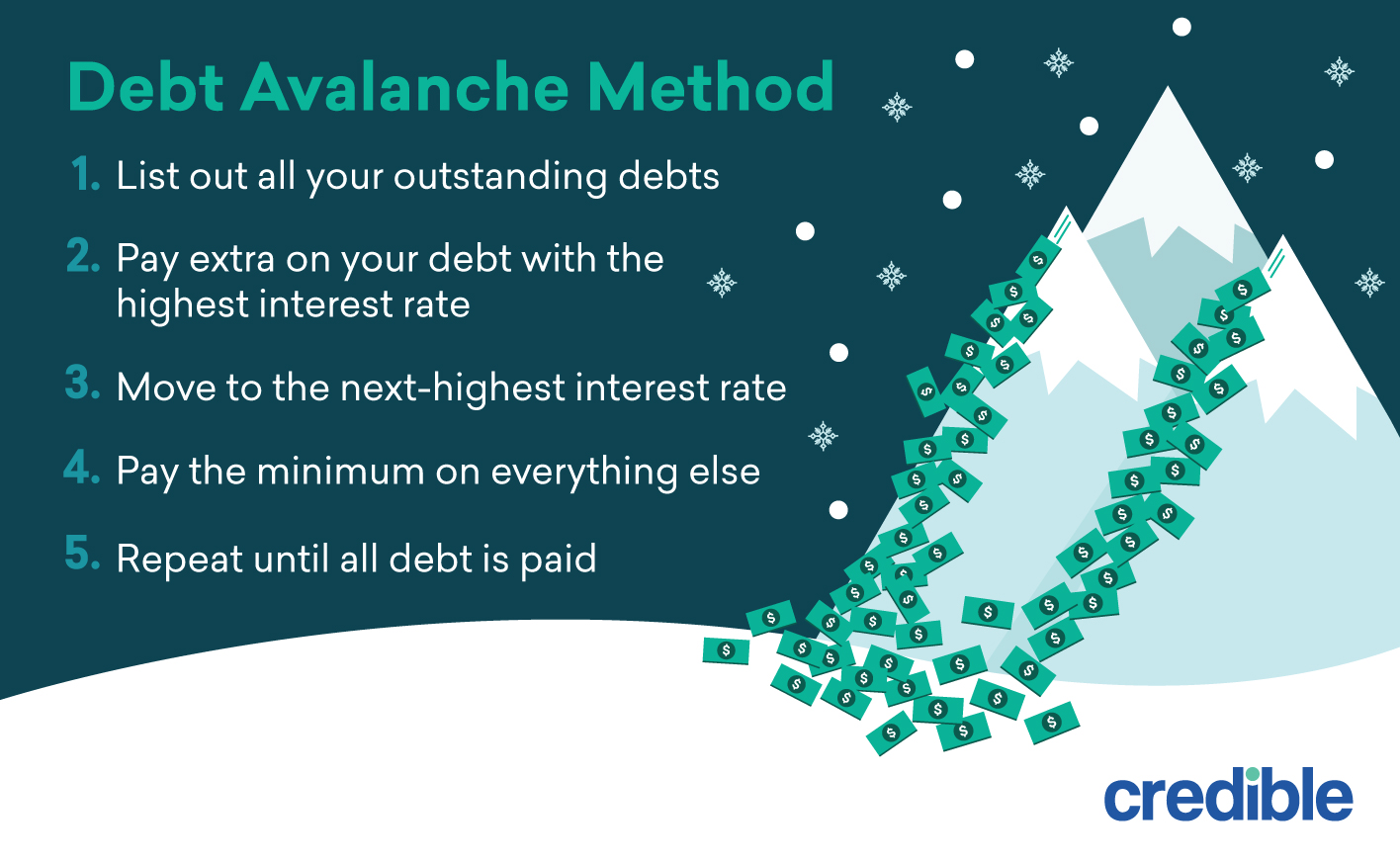
Pros
Could save money on interest: Paying down your highest-interest debt first could help you reduce your overall interest charges.Might get out of debt faster: Saving money on interest might help you pay off your debt ahead of schedule.
Cons
Could take longer to see results: While paying down your highest-interest debt might help you save money on interest, it could take a while to see any significant results.Might be hard to sustain motivation: If you need to enjoy small wins to maintain motivation, you might have a hard time sticking to the debt avalanche method.
Learn More: How to Consolidate Bills Into One Payment
Use the debt snowball method
Best if: You’re motivated by small wins.
If you choose the debt snowball method, you’ll concentrate on repaying your smallest debt first. Here’s how it works:
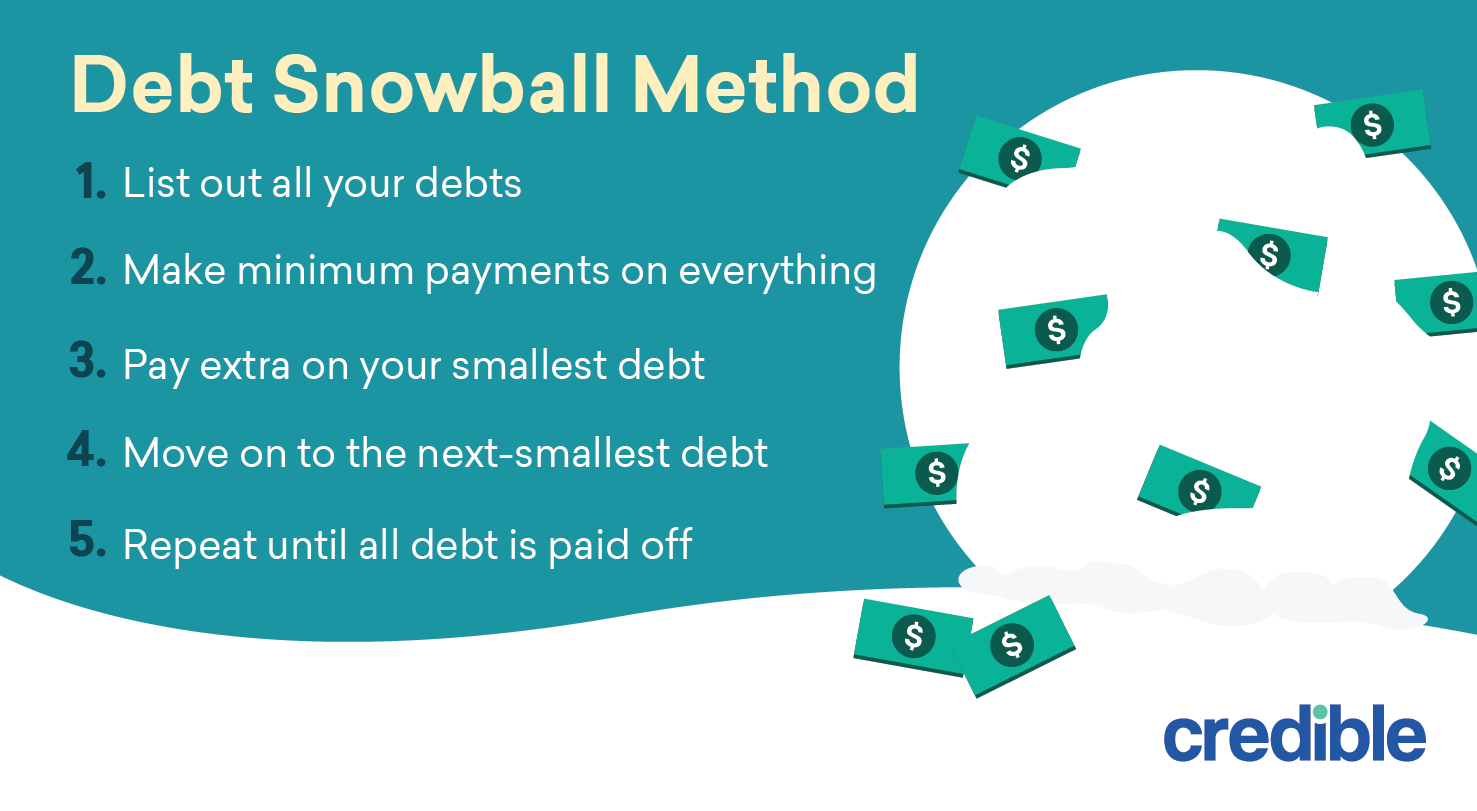
Pros
Faster results: You’ll likely see quicker results with the debt snowball method compared to the debt avalanche.Could help maintain motivation: Because you’ll be paying off balances sooner with the debt snowball, it could be easier to stay motivated.
Cons
Won’t save as much on interest: The debt snowball method generally doesn’t offer the same amount of interest savings as the debt avalanche.Could take longer: Because you won’t be saving much money on interest, it will likely take longer to fully repay your debt using the debt snowball method.
Check Out: Are Interest-Free Loans Really Interest-Free?
4. Reevaluate your current spending
Establishing a financial plan that prioritizes paying off debt could also help you tackle a $10,000 credit card balance. Here are a few strategies that could help:
Create (or update) your budget
Creating a budget is a good way to keep track of your income as well as your expenses. It can also help you plan for your financial goals — such as paying off your credit card debt.
To set up a budget focused on debt payoff:
Calculate your monthly income.Calculate your monthly expenses.Subtract your expenses from your income — this amount is what you can afford to put toward your debt.
Cut out the non-essentials
As you list out your monthly expenses, consider what you might be able to cut. For example, maybe you could unsubscribe from a streaming service you hardly use. Or you might start cooking at home to save money on dining out.
Tip: By reducing your spending, you’ll have more room in your budget to focus on paying off your credit card debt.
Sell your stuff
Many of us have unused items lying around the house that could be sold for extra cash. For example, you might consider selling electronics, furniture, or books.
Tip: If you don’t have anything to sell, you could consider purchasing items for cheap on a marketplace, upcycling them, and reselling for a profit.
Find a side hustle
After reviewing your budget, you might find that you don’t have much extra cash to put toward debt. In this case, you might think about starting a side hustle to earn more money.
For example, you could:
Drive for a ridesharing business, such as Uber or LyftDeliver food through DoorDash or UberEatsOffer freelance services, such as writing or consultingTutor local students
Frequently asked questions
Here are the answers to a few commonly asked questions about paying off credit card debt:
What is the monthly payment on a $10,000 loan?
The monthly payment on a $10,000 loan will depend on:
Interest rate: You’ll generally need good to excellent credit to qualify for the lowest available interest rates. The higher your interest rate, the more you’ll pay monthly as well as over the life of the loan.Repayment term: Personal loans typically come with a term ranging from one to seven years, depending on the lender. Choosing a longer term will likely get you a lower monthly payment — but it also means you’ll pay more in interest over time. It’s usually a good idea to choose the shortest term you can afford to keep your interest costs as low as possible.For example: Say you take out a $10,000 debt consolidation loan with a 10% interest rate and a five-year term. With these terms, you’d end up paying $323 a month with a total repayment cost of $11,616.
If you qualified for a 7% interest rate and chose a three-year term instead, you’d have a monthly payment of $309 and a total repayment cost of $11,115.
Is it smart to pay off one credit card with another?
You typically can’t use a credit card to make payments on another card. However, you can move your balance from one card to another with a balance transfer.
If you can qualify for a balance transfer card with a 0% APR introductory offer and can repay your balance before this period ends, then it could be a good way to save money on interest. But if you wouldn’t be able to pay off the card in time, you might be better off keeping your balances where they are.
How much credit card debt is OK to have?
Whether or not you have too much credit card debt depends on a couple of factors:
Monthly income: Having monthly debt payments that take up a large portion of your income can make debt unmanageable and saving for other goals impossible. It’s generally advised that monthly debt payments in total take up no more than 36% of your monthly income.Credit utilization: One of the major components of your credit score is your credit utilization ratio — the amount you owe on revolving credit lines (like credit cards) compared to your total credit limits. Using a high percentage of your available credit could have a negative impact on your credit. It’s typically a good idea to keep your credit utilization ratio under 30%.
If you decide to take out a personal loan to consolidate your credit card debt, remember to consider as many lenders as you can to find the right loan for you.
This is easy with Credible: You can compare your prequalified rates from multiple lenders in two minutes — without affecting your credit.
Ready to find your personal loan?
Credible makes it easy to find the right loan for you.
Free to use, no hidden feesOne simple form, easy to fill out and your info is protectedMore options, pick the loan option that best fits your personal needsHere for you. Our team is here to help you reach your financial goalsFind My Rate
Checking rates won’t affect your credit
Trustpilot
The post How to Pay Off $10,000 in Credit Card Debt appeared first on Credible.
Underwater Mortgage: What Is It and What Are Your Options?

Your home can be your biggest asset and a primary tool for building wealth over the long term. But like other assets you invest in, such as stocks and bonds, the value fluctuates. These fluctuations can put you underwater with your mortgage.
Here’s what you need to know about underwater mortgages and what you can do if you have one:
What is an underwater mortgage?Signs of an underwater mortgageProblems with underwater mortgagesUnderwater mortgage options
What is an underwater mortgage?
An underwater mortgage, also known as an upside-down mortgage or having negative home equity, is a home purchase loan with a principal balance that exceeds the value of the home — in other words, you owe the lender more than your home is worth.
Underwater mortgages were common during the Great Recession from 2007 to 2009, when home values throughout the country plummeted and continued to decline for several years after the recession’s end. Homeowners with purchase or refinance loans based on pre-crash home values found themselves underwater as a result.
Underwater mortgages are less common today because of tighter underwriting standards and record price increases since the pandemic. Median home prices increased nearly 25% from June 2020 to June 2021, so there’s a good chance that your home is worth more now than when you bought it.
Signs of an underwater mortgage
Situations that might push you into negative equity include a decrease in local property values. A low appraisal is also a good indicator that you might be underwater on your mortgage.
Here’s how to find out if your loan is underwater.
Figure out how much you owe
You can find out how much you owe by checking your mortgage statement. You’ll see the amount listed under “principal balance” or “outstanding principal”.
If you need to know the exact amount immediately, you’re best off calling your loan servicer and asking for your payoff amount. That figure will include interest and fees that have accrued since the lender prepared your statement.
Whether you’re researching rates or looking to buy a home, Credible is here to help. You can compare prequalified rates on home loans from all of our partner lenders in just a few minutes.
Credible makes getting a mortgage easy
Instant streamlined pre-approval: It only takes 3 minutes to see if you qualify for an instant streamlined pre-approval letter, without affecting your credit.We keep your data private: Compare rates from multiple lenders without your data being sold or getting spammed.A modern approach to mortgages: Complete your mortgage online with bank integrations and automatic updates. Talk to a loan officer only if you want to.Find Rates Now
Trustpilot
Determine your home’s value
The only way to get an accurate opinion of value is to have your home appraised by a licensed home appraiser. A professional home appraisal is usually worth the cost if you’re hoping to sell your home. Otherwise, you can get a ballpark figure for free from a real estate portal site like Redfin or Realtor.com.
Subtract your home value from your principal balance
The final step is a simple math problem that will show whether you’re underwater:
Value – Balance = Equity
If, for example, your home is worth $200,000 and you owe $225,000 on your mortgage, the equation will look like this:
$200,000 – $225,000 = -$25,000
In this scenario, you’re $25,000 underwater on your home loan.
Problems with underwater mortgages
An underwater mortgage doesn’t always have a negative impact on a homeowner. If your mortgage is affordable and you’re not planning to sell or refinance, you might not worry about it at all. However, when that’s not the case, an underwater mortgage can put you at a serious disadvantage.
Refinancing
Lenders protect themselves against default by limiting how much of your equity you can refinance. The limit might be 80% for a cash-out refinance, for example, or 95% for a rate-and-term refinance. But if you have negative equity, you have nothing to draw against.
Even in the event you find a loan that lets you refinance 100% of your home’s value, the new loan won’t fully repay the underwater one. In that case, you’ll have to pay enough cash at closing to make up the difference.
Also See: How to Refinance Your Mortgage in 6 Easy Steps
Selling
Most mortgage loans have a due-on-sale clause that makes the loan due in full when the owner sells. In the case of an underwater mortgage, where the sale won’t cover the amount needed to pay off the loan, you’ll need enough cash at closing to make up the difference.
Foreclosure
Your lender can’t foreclose simply because you’re underwater, but being underwater increases your risk of foreclosure because it limits your options. Since you might not be able to refinance or sell the home, there’s a greater chance of your home going into foreclosure if you can no longer keep up with the mortgage payments.
Underwater mortgage options
You don’t necessarily have to take action when your mortgage is underwater, but it’s probably a good idea, even if only to ward off future problems. If you’re already struggling, a quick response can keep you from losing your home.
Stay in your home
The simplest option is to remain in your home and continue making your regular mortgage payments. By paying down your principal balance, you’ll continue to build equity. Consider making extra principal payments to pay down your loan balance faster.
You can also try to increase the value of your home. Home remodeling projects rarely generate a positive return on investment unless you can do the work yourself, but simple jobs that improve curb appeal can give your home value a boost for little cost beyond elbow grease.
Tip: If you can’t afford to make extra principal payments or remodel your home, sit tight and wait for a market cycle more favorable to sellers. This can right your mortgage naturally as values appreciate.
Refinance
Refinancing an underwater mortgage is tricky because you typically need equity to do it. However, you might be in luck if your loan is backed by Freddie Mac.
The Freddie Mac Enhanced Relief Refinance is meant for homeowners whose mortgages are underwater. This option could make your loan more affordable by lowering your mortgage rate and monthly payment or allow you to increase your equity faster with a shorter repayment period.
The program is available if you took out your home loan on or after Oct. 1, 2017, and are current with payments. Additional requirements include having had no 30-day delinquencies within the last six months and no more than one 30-day delinquency in the last year. Fannie Mae has a similar program but has paused it temporarily.
What about government-backed loans? Certain government-backed loans may still allow you to refinance if your mortgage is underwater. The FHA streamline refinance program, for instance, doesn’t require an appraisal, so you can refinance your FHA loan even if you have negative equity.
On the other hand, the VA no longer guarantees loans where the loan-to-value ratio exceeds 100%. Some lenders do set a higher cap on streamline refinances, but the cap includes closing costs and funding fees that the lender rolls into the loan. These costs can put you even further into negative equity.
Sell your home
You’ll have to meet one of two conditions to sell a home with an underwater mortgage:
Make up the difference between your loan balance and the sale price with a cash payment at closingGet permission from your lender to sell short
Unless you’re struggling to make payments, in which case you probably lack the funds to bring cash to closing, it doesn’t make sense to sell while your mortgage is underwater. But if you are struggling, a short sale can be an alternative to foreclosure.
Your lender won’t allow a short sale unless you document a hardship that’s likely to keep you from making payments for the foreseeable future, such as a job loss or disability. It can also take months before your lender approves the short sale.
In the meantime, you might rack up enough late payments that a short sale will do as much harm to your credit as a foreclosure would. And if the lender does approve the short sale, you might have to pay tax on the amount of the loan balance the lender forgives.
Walk away
Your last resort is to simply walk away from your home and let the lender foreclose on it. This option is called a strategic default because you’ll have concluded that you’re unable to stay in the home and instead plan to use the money to pay off other debt or build savings for rent.
Foreclosure will negatively impact your credit and remain on your credit report for seven years. As such, you might find it difficult to rent a home. Paying some or all of your rent upfront, though, gives you a better chance at having your rental application approved.
Important: One more option you can try before walking away is a loan modification. This is an agreement between you and your lender that changes the terms of your loan and makes your mortgage payment more affordable. Your credit might still take a hit, but it can at least help you avoid foreclosure. Talk to your lender to see if you qualify.
The post Underwater Mortgage: What Is It and What Are Your Options? appeared first on Credible.
Did you miss our previous article…
https://www.coloradomicrofinance.org/?p=235
16 Fast Weekend Projects to Boost Your Home’s Curb Appeal
Taking on projects to boost your home’s curb appeal can give you a great sense of satisfaction and boost your mood every time you see your completed work.
Here are 16 projects that aren’t expensive or time-consuming — and that you can often do yourself:
Sweep the front porchGet a new front porch matHang a decorative wreathAdd potted plants to your front porchHide your hoseEliminate weedsAdd natural mulchReplace light fixturesClean, touch up, or completely repaint your front doorClean and polish or change front door hardwarePrune flowers and shrubsPressure wash your concreteHire a tree trimmerEmbellish your garage doorStyle your mailboxAttach house numbers

1. Sweep the front porch
The fastest, cheapest thing you can do to boost your home’s curb appeal is to get out a broom and dustpan and sweep your front porch.
You’ve probably become oblivious to the dead leaves and dirt that have accumulated there, so cleaning up will make an instant difference. Everyone who walks up to your front door is sure to notice.

2. Get a new front porch mat
Now that you’ve got a clean front porch, the next simplest way to spruce it up is with a new porch mat. Chances are, you either don’t have one at all, or you have an old one that’s looking ratty.
Hit up a big box store for a simple mat or outdoor rug you can use year-round. Buy a seasonally themed mat from virtually any home goods vendor. Or order something customized from a creator on Etsy.
If you need cash for a major home improvement project, consider a cash-out refinance. Credible can help you find a great refinance rate from our partner lenders in just a few minutes — checking rates with us is free, secure, and won’t affect your credit score.
Get the cash you need and the rate you deserve
Compare lendersGet cash out to pay for home improvementsPrequalify in just 3 minutesFind My Loan
No annoying calls or emails from lenders!
Trustpilot

3. Hang a decorative wreath
If you want to dress up your front door, try a wreath! You don’t have to hammer a nail into the door to hang it, either. You can use a temporary adhesive hook or an over-the-door hanger.
Choose from holiday-specific wreaths (like Halloween or Easter), seasonal wreaths to celebrate fall or spring, or year-round wreaths that look good all the time.
Front door signs, hung on the door or propped next to it, are also a simple and affordable way to make your front entrance more inviting.
Don’t Miss: 8 Popular Pandemic Home Renovations to Transform Your Space

4. Add potted plants to your front porch
Even the smallest front porch usually has room for a potted plant or two. You might go for a vibrant magenta Tradescantia zebrina or a classic green fern. Consider how much sun the plants will get: You might need shade-loving varieties. Also, keep pet safety in mind.
If you purchase plants from your local nursery, you’re almost guaranteed to get something that’s well-suited to the season and climate, but for a wider selection, you can order plants online.
Tip: If your gardening skills are nonexistent, consider a high-quality artificial plant. You might be surprised by how realistic they can look!
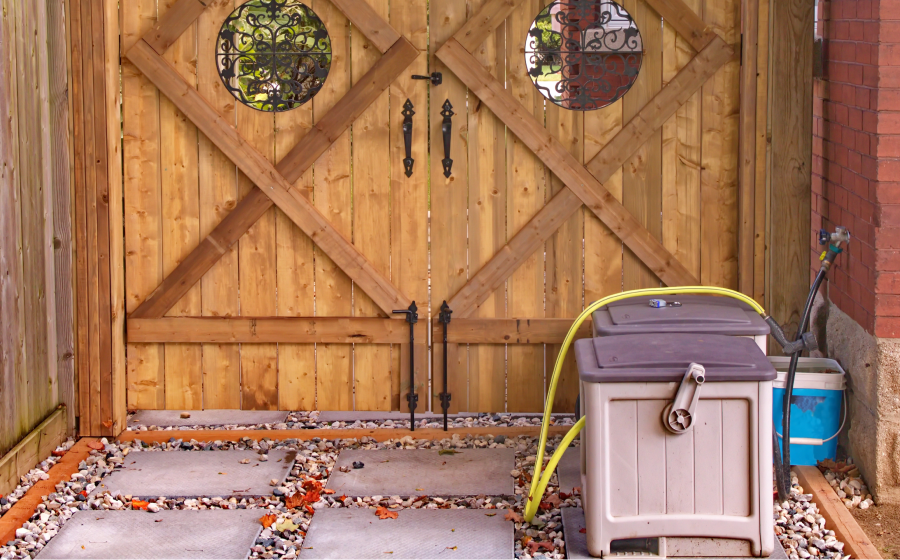
5. Hide your hose
Many of us have a hose in front of our house that we don’t put away because we use it so often. As convenient as this is, some form of hose storage will eliminate the visual clutter of an uncoiled hose.
If you have the right power tools, you can mount a hose holder to a wall, but if you don’t want to drill holes into your home — or you’re looking for an easier project — a hose pot will also work.
One free, temporary fix is to just unscrew your hose from the faucet and store it in the garage. This can be a good option if you just want to impress guests in the short term and aren’t looking for a long-term solution.

6. Eliminate weeds
Weeds are another nuisance that you might have stopped noticing if you see them day after day. Pulling them can be a ton of work, and it won’t work long-term unless you get all the roots out.
There are, however, natural ways to kill weeds using substances you already have around the house. Vinegar, salt, and dish soap can help you kill unwanted plants. Check online for DIY recipes and application tips.
For weeds in your lawn, adjusting your watering and mowing patterns can also help limit weed growth going forward.

7. Add natural mulch
In flower beds and gardens, a thick layer of mulch will help prevent those weeds you just pulled from growing back. Mulch’s sunlight-blocking power also retains soil moisture so you can water less and keep your plants healthy.
You’ll want to do a bit of research to determine the best kind of mulch for your plants and climate, how close to your trees and plants it can be, and which types of mulch are the safest for people and pets.

8. Replace light fixtures
Replacing your old exterior light fixtures with more modern ones can help update your home’s look. It involves some electrical work, so you may want to hire an electrician. However, if you’re comfortable learning basic electrical safety, reading instructions, and watching a few videos, replacing light fixtures can be an easy DIY job.
For an extra-fun change, use smart light bulbs in your new fixtures. You can control these via WiFi and change their color and brightness with your smartphone.

9. Clean, touch up, or completely repaint your front door
Your front door will get dirty and fade over time since it’s exposed to the elements 24/7. Sometimes, just cleaning it with a wet rag will make a big difference, but other times, your door will need a paint job to look its best.
Painting your front door a bright color that complements the other colors in your home’s exterior can make your home stand out in a good way — and potentially raise your home’s value.
The ideal way to do the job will involve removing the door and hardware, filling and sanding any cracks, painting, then reinstalling the door. But you can also paint it in place by taping off the hardware and putting down a drop cloth to prevent paint drips and spills from marring your porch.
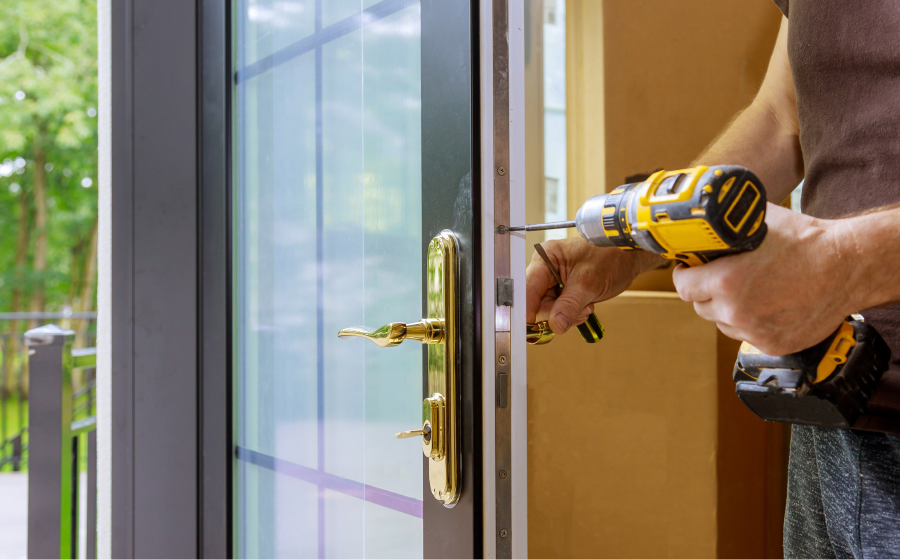
10. Clean and polish or change front door hardware
So many things in our homes can look like they need replacement because we’ve never cleaned them properly, and door hardware definitely falls into that category. The solution is sometimes as simple as a dish soap and water mixture.
For problems that go beyond surface dirt, you’ll need to know what material the doorknob is made of. Coated or plated hardware can require different cleaning approaches than solid metal. If your door hardware has corroded due to factors like humidity or salt air, replacing it is probably the best.
Keep Reading: 10 Ways to Craft an Elegant Outdoor Space

11. Prune flowers and shrubs
You should be able to improve your curb appeal by pruning away the dead parts of your flowers, shrubs, and hedges. If you can reshape them, even better!
You might also need to pull out plants that are beyond recovery and add new ones. Planting new flowers in full bloom is a great way to quickly add color to your landscape.
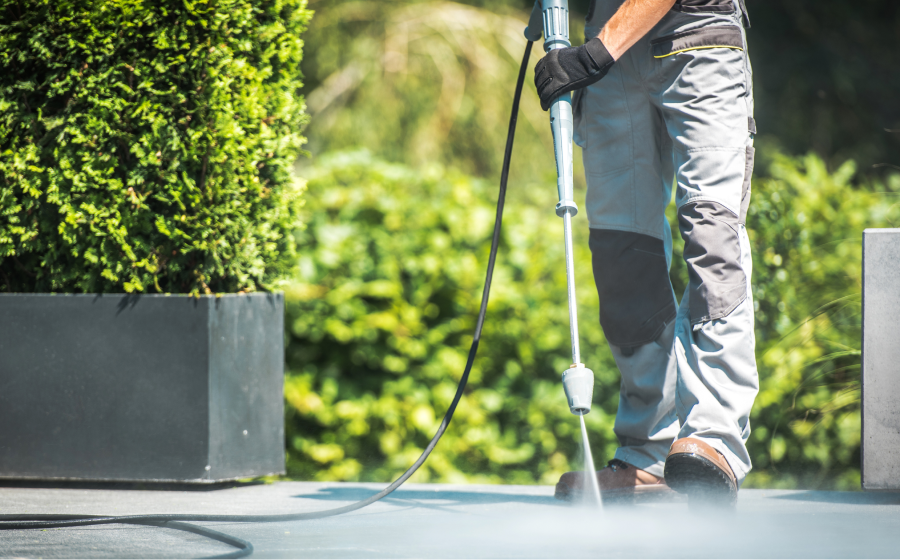
12. Pressure wash your concrete
To get stains and mildew out of the hard surfaces around your home, like your patio and driveway, try pressure washing. With the right detergents and degreasers, you can remove years of grime. Best of all, it’s one of those home improvement projects you can wrap up in a day.
You can borrow a pressure washer from a neighbor or rent one from a home improvement store. Carefully follow the instructions so you don’t hurt yourself. Also, certain materials can be damaged by pressure washing, so do your research first, or hire a professional.
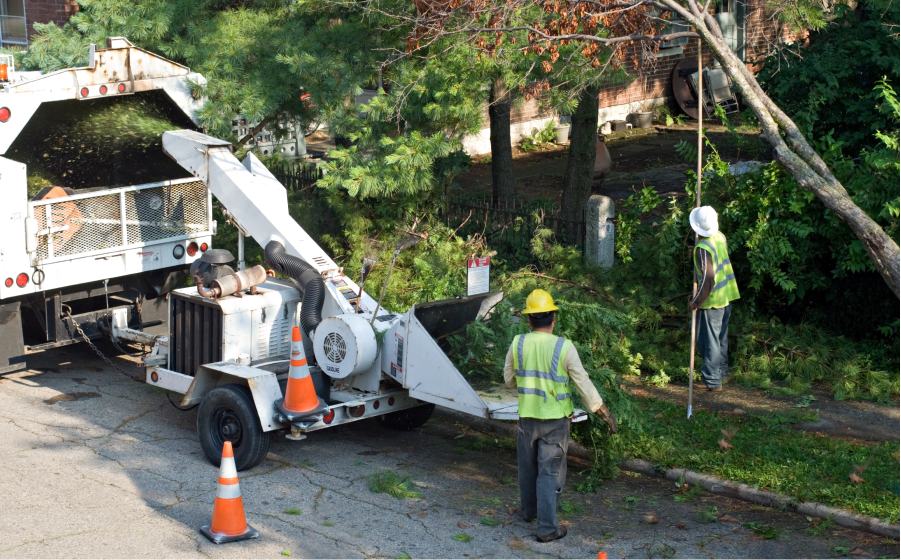
13. Hire a tree trimmer
Having your trees professionally trimmed can make a big difference in your curb appeal.
An arborist will know how to shape your trees to make them look their best. They can also keep your trees healthy by thinning enough branches to improve air circulation and treating any problems that might be weakening your trees.
Besides, it’s a good idea to identify trees or limbs that could be in danger of falling in a storm, then take care of them promptly. A house that’s been partially crushed by a tree is not a pretty sight.

14. Embellish your garage door
If you have a traditional raised-panel garage door, you can add decorative or “dummy” hardware to make it more attractive. These handles and hinges don’t serve any functional purpose, but do add visual interest. There are also kits that allow you to add simulated windows.
Give your door a carriage style, mid-century modern, or contemporary look to go with the rest of your home. Just make sure to install the embellishments in a way that won’t affect the door’s ability to open and close smoothly.

15. Style your mailbox
A professional might be able to build you a custom stone mailbox in a weekend, but for a more affordable DIY upgrade, you have a few options.
If you have a metal mailbox, try cleaning it and spray painting it. You can also order decals, letters, and numbers to customize your mailbox. Or perhaps landscape your mailbox by adding plants and flowers around it.
Keep in mind that you’ll need to prune them periodically, and you may not want to plant anything that attracts lots of bees (like lavender) so you don’t have to worry about getting stung when you check the mail.

16. Attach house numbers
You can make sure your address is prominently displayed on your house by replacing old house numbers or installing new ones. This is also a way to ensure that emergency services can locate your home and that someone else’s packages don’t get dropped on your doorstep. Kits are available online in all different styles.
Boosting your curb appeal is a great way to get more money when selling your home. But even if you’re not selling, sprucing up your home’s exterior will increase your pride of ownership and create a more welcoming experience for your guests. And once you see the results of your first project, you’ll probably feel inspired to do even more.
Shopping around for a home loan can be stressful. Fortunately, Credible simplifies this process and makes comparing multiple lenders easy. You can see prequalified refinance rates from our partner lenders in just a few minutes.
window.credibleAsyncInit = function() {
CredibleSDK.initWidget(‘#credible-rate-table’, {
environment: ‘production’,
product: {
marketplace: ‘mortgage-combined’,
type: ‘rate-table’,
variation: ‘shortened’,
loantype: ‘refinance’,
},
analytics: {
source: ‘credible_blog’,
},
});
CredibleSDK.initWidget(‘#mortgage-combined-rate-widget-simple’, {
environment: ‘production’,
product: {
marketplace: ‘mortgage-combined’,
type: ‘rate-widget’,
variation: ‘simple’,
},
analytics: {
source: ‘credible_blog’,>
The post 16 Fast Weekend Projects to Boost Your Home’s Curb Appeal appeared first on Credible.
Did you miss our previous article…
https://www.coloradomicrofinance.org/?p=219
What Happens to Your Mortgage When You Die?

One important aspect of estate planning is deciding what will happen to your home after you die. The answer might be fairly cut and dry if the home is fully paid for. If it’s not, though, you’ll need to consider the financial ramifications for your estate and for the person who inherits the home.
Here’s what happens to your mortgage when you die:
Who assumes a mortgage after my death?How to take over the mortgage of an inherited housePlanning ahead
Who assumes a mortgage after my death?
No one automatically assumes your mortgage after your death. Your estate executor (i.e., the person you appoint to carry out your will and manage your estate after you die) or administrator (i.e., the person a court appoints to fulfill those same duties) will continue to make payments using funds from the estate while everything is being settled.
Later, the individual who inherits the home might be able to assume the loan.
Good to know: If you’re a co-borrower or cosigner with the decedent, you don’t have to do anything to take over the mortgage because you’re already responsible for paying it. You’ll simply continue the payments. However, you should contact the mortgage servicer to inform them of the decedent’s death.
How to take over the mortgage of an inherited house
Mortgage loans have a due-on-sale clause, also called an acceleration clause, that requires the loan to be paid in full if it transfers to a new owner. However, federal law prohibits lenders from accelerating a loan in the event of a borrower’s death. Individuals who acquire ownership this way are considered “successors in interest,” and lenders must treat them as if they were the borrower.
The law allows a successor in interest to assume the loan, without having to apply or qualify, and continue making the payments. You’re also entitled to modify the mortgage to avoid foreclosure if you wish to keep the home.
What are my options as the heir of a home with a mortgage?
In the event you inherit a mortgaged home, you have several options. Which one is best depends on your personal preferences and your financial situation.
If you want to keep the house, you can:
Assume the mortgage: Federal law allows heirs to assume a decedent’s mortgage loan in many cases. As long as you’re a qualified successor in interest — someone who inherited or otherwise acquired ownership as a result of the homeowner’s death — you can take over the loan once the deed is signed over to you. The law also entitles you to modify the loan if you’re not financially capable of making the payments.Refinance the mortgage loan: You can also refinance the mortgage into a new mortgage loan as soon as the deed is signed over to you. You’ll have to apply for the loan, qualify based on your own creditworthiness, and pay any closing costs. However, refinancing could result in a lower interest rate or an extension of the time to pay off the loan — either of which can make the home more affordable.Repay the loan in full: Assuming you have the cash on hand, you can avoid mortgage issues entirely by paying the balance in full. The home would then be yours free and clear.
If you can’t or don’t want to keep the house, you can:
Sell it: The home is yours as soon as the deed has been transferred to you, so you can list it for sale just like you would a home you’d purchased yourself.Let the lender foreclose: If you don’t want the house and don’t want to sell it — a reasonable decision if you’re unlikely to sell at a profit — you can simply take no action. After a period of time with no payments, the lender will foreclose and repossess the home.
Important: Foreclosure can have tax consequences for the estate. Contact an accountant or attorney before going this route.
What happens to a reverse mortgage when you die?
The rules change when you inherit a home from someone other than a spouse with whom you are a co-borrower on the home’s reverse mortgage.
A reverse mortgage allows older homeowners to access the existing equity from their home. These loans don’t have to be paid back unless the borrower and their co-borrower spouse both die or move out of the home.
If you inherit a property with a reverse mortgage, you have the option of selling or keeping the home. The loan is not assumable, but you can keep the house by doing one of two things: paying off the balance or paying 95% of the home’s value, whichever is less.
Similarly, if you decide to sell the home, you’ll use the sale proceeds to pay off the debt owed on the loan — or an amount that’s at least 95% of the home’s value — and then pocket the remaining proceeds.
Planning ahead
A crucial step in estate planning is drafting a will detailing how you want your estate handled after you die, along with who you want to serve as the estate executor. In the event you die intestate — without a will — the court will appoint an administrator to take on that role.
When planning to bequeath a mortgaged home, it’s important that you disclose the mortgage to your executor and close relatives — otherwise they won’t know to make payments, and the home could be lost to foreclosure inadvertently.
In addition, consider whether the individual who inherits your home will be able to afford mortgage payments and upkeep. An estate or financial planner can help you devise a strategy to keep your gift from becoming a burden to your loved ones.
Compare your home loan options
Credible is a mortgage marketplace that allows you to easily compare rates and loan options. With Credible, you can secure a streamlined pre-approval letter and see loan details from all of our partner lenders in just a few minutes. We also provide transparency into lender fees that other brokers typically don’t.
Credible makes getting a mortgage easy
Instant streamlined pre-approval: It only takes 3 minutes to see if you qualify for an instant streamlined pre-approval letter, without affecting your credit.We keep your data private: Compare rates from multiple lenders without your data being sold or getting spammed.A modern approach to mortgages: Complete your mortgage online with bank integrations and automatic updates. Talk to a loan officer only if you want to.Find Rates Now
Trustpilot
The post What Happens to Your Mortgage When You Die? appeared first on Credible.
Did you miss our previous article…
https://www.coloradomicrofinance.org/?p=218
4 Ways to Determine House Value

Whether you’re thinking of buying, selling, or refinancing — or you’re just curious — you might want to know how to determine a house’s value. Fortunately, there are several ways to find out how much a house is worth, and you might get different results from each one.
Here are some options for finding the value of a home:
Online home value calculatorsComparative market analysis from a real estate agentFHFA House Price Index CalculatorProfessional appraisal
How to find the value of your home
To determine your home’s value, try one or more of these methods.
1. Online home value calculators
Online home value calculators use automated valuation models, or AVMs, to estimate how much your home is worth. These estimates are based on a wide range of property and local market data, including your home’s square footage, number of bedrooms and bathrooms, recent comparable sales, local market trends, and more.
Online valuation tools don’t account for unique features of your home that might increase or decrease its value, such as how old your roof is or when you last remodeled your kitchen. For that, you’ll need a professional appraisal.
Tip: You’ll also get different home values from different calculators because they use proprietary formulas.
Here are two home value calculators we like:
PennyMac Home Value EstimatorRedfin Home Value Estimator
If you’re in the market for a new home, you’ll want to secure a great mortgage rate for your home loan. Credible can help with this. We make comparing rates from multiple mortgage lenders easy. In just a few minutes, you can see prequalified rates and compare a wide range of loan options for free — our process is safe and secure, and checking rates with us won’t affect your credit score.
Credible makes getting a mortgage easy
Instant streamlined pre-approval: It only takes 3 minutes to see if you qualify for an instant streamlined pre-approval letter, without affecting your credit.We keep your data private: Compare rates from multiple lenders without your data being sold or getting spammed.A modern approach to mortgages: Complete your mortgage online with bank integrations and automatic updates. Talk to a loan officer only if you want to.Find Rates Now
Trustpilot
2. Comparative market analysis from a real estate agent
If you’re planning to hire a real estate agent to help you sell your home, you can ask them for a comparative market analysis, or CMA. They’ll look at similar, recently sold properties in your area and analyze how they compare to yours. After that, they’ll arrive at a fair market value and help you set a strategic listing price for your home.
A CMA requires a knowledgeable local agent who can assess how other homes’ characteristics contributed to their selling price, along with how your home compares and how to estimate its value accordingly.
Your agent will also need to understand nuances such as how much buyers in your area will devalue a property that backs up to a major road or how much value a screened-in patio adds.
See: How to Increase Your Home Value: Complete Guide
3. FHFA House Price Index Calculator
The Federal Housing Finance Agency’s (FHFA) House Price Index (HPI) Calculator is an online tool that can tell you how the estimated value of a home in a given metropolitan statistical area (MSA) may have changed since you purchased it. Its calculations are based on the percentage change in home values in the MSA during that time span.
The FHFA’s HPI calculator is not likely to be useful to an individual who is buying or selling a home. That’s because the values it provides are based on averages, and it can’t tell you the actual value of a specific house. Homes within the same MSA can have wildly different values because an MSA encompasses such a large area. The HPI doesn’t account for neighborhood conditions or a specific home’s attributes.
This tool, and all the data behind the HPI, might help you out if you’re a researcher or an economist, or if you simply want a quick overview of how property values have trended in the area over the years. But if you’re looking for a more accurate valuation of your home, we’d recommend going with a professional appraisal.
4. Professional appraisal
Hiring a professional appraiser costs several hundred dollars but is often the best way to get the most accurate value for your home. That’s why mortgage lenders often require a home appraisal before they’ll approve your mortgage application.
Good to know: Lenders do sometimes rely on AVMs to save time and money or even waive the appraisal for a refinance or second mortgage.
Here are some of the factors appraisers take into account when establishing a value for your home:
LocationSquare footageInterior and exterior conditionNumber of bedrooms and bathroomsLot sizeAge of the homeHeating and coolingUpdates and renovations (such as a new garage door or hardwood floors)Neighborhood and surrounding propertiesHome designCurrent market conditions
What is home value?
There’s more than one way to determine a home’s value. Here are three valuation methods for residential real estate and the different purposes they serve.
Fair market value
Fair market value is how much someone is willing to pay for your home. It’s based on supply and demand and explains why old mansions in Midwestern cities with major population losses can cost less than starter homes in bustling West Coast cities.
Fair market value assumes that the seller isn’t giving the buyer any breaks on the price, and that the buyer has a solid understanding of the property’s characteristics.
ppraised value
Appraised value is how much your home is worth for lending purposes. It’s determined by a state-licensed appraiser.
The appraised value may be higher or lower than fair market value. If it’s lower, the seller will need to lower the price. Otherwise the borrower will need to increase their down payment to gain mortgage approval and close the deal.
Tip: Appraisers try to be objective, but can make mistakes or be biased. You can challenge a low home appraisal with solid data.
ssessed value
Assessed value is how much your home is worth for property tax purposes. To find the assessed value of your home, you can look at your property tax statement or contact your local property tax assessor.
Some jurisdictions even have websites where anyone can look up a property’s assessed value. Assessed value may be less than the property’s current fair market value. Common reasons for this include homeowners exemptions and statutory limits on annual property tax increases.
Keep Reading: Property Tax Assessment: What It Is and What It Means
The post 4 Ways to Determine House Value appeared first on Credible.
Did you miss our previous article…
https://www.coloradomicrofinance.org/?p=217
How to Shop for a Mortgage

You might feel like you’re ready to buy a home, but in addition to hunting for the perfect property, you’ll likely need to shop for the right mortgage loan before you commit to that purchase.
Knowing how to shop for a mortgage and compare offers can help you find the home loan that fits your situation and potentially save you thousands of dollars.
Here are some important things to consider when you’re shopping for a mortgage:
Consider mortgage typesCheck your credit scoreReview your credit reportExplore different financing optionsShop around for best ratesGet pre-approved
1. Consider mortgage types
A mortgage loan allows you to borrow the funds needed to buy a home. Understanding the features and requirements of each major mortgage program can help you figure out which one is right for your situation.
Most mortgages require a minimum down payment, usually around 3% to 5% of the sale price, and a minimum credit score.
If you’re looking for a great mortgage rate, Credible’s streamlined process can help. We make comparing multiple mortgage lenders easy. In just a few minutes, you can see prequalified rates all without leaving our platform.
Credible makes getting a mortgage easy
Instant streamlined pre-approval: It only takes 3 minutes to see if you qualify for an instant streamlined pre-approval letter, without affecting your credit.We keep your data private: Compare rates from multiple lenders without your data being sold or getting spammed.A modern approach to mortgages: Complete your mortgage online with bank integrations and automatic updates. Talk to a loan officer only if you want to.Find Rates Now
Trustpilot
Conventional loan
Conventional loans are mortgages offered by private banks, credit unions, and mortgage lenders but aren’t backed by government institutions. Instead, conventional loans are typically backed by Fannie Mae and Freddie Mac, two agencies that purchase mortgages and set borrower qualification requirements.
To get a conventional loan, you usually must pay at least 3% to 5% of the home’s purchase price as a down payment. You’ll also need a credit score of around 620 or higher, and the loan amount must follow conforming loan limits.
FHA loan
An FHA loan is a mortgage that’s funded by a bank, credit union, or other mortgage lender but insured by the Federal Housing Administration (FHA).
The government guarantee allows mortgage lenders more flexibility here, so you might qualify with a credit score of 580 if you can put down at least 3.5%. With a credit score in the 500 to 579 range, you’d need a down payment of 10% or more.
VA loan
VA loans are funded by private lending institutions and backed by the U.S. Department of Veterans Affairs. These mortgages are available to eligible members of the armed forces, veterans, and surviving spouses.
If you qualify, you could get approved for a mortgage with a 0% down payment and no mortgage insurance, though you’ll typically need to pay a funding fee. The VA doesn’t set minimum credit score requirements, but your lender may have its own limit.
USDA loan
USDA loans are guaranteed by the U.S. Department of Agriculture. These loans are designed for low-income borrowers who plan to purchase a home in a USDA-designated rural area.
You won’t have to make a down payment on a USDA loan, but you’ll be responsible for paying an upfront fee and an annual fee.
Keep Reading: What Is a Mortgage? Everything to Know About Home Loans
2. Check your credit score
When you apply for a mortgage, lenders typically pull your credit scores from all three major credit bureaus: TransUnion, Equifax, and Experian. Your credit scores help lenders predict how likely you are to repay a loan. As such, it factors into whether you’ll qualify for a mortgage and the loan terms you’ll receive.
All three of your credit scores may differ, so the lender will order the scores from lowest to highest and use the middle score to determine loan qualification. So, for example, if your scores are 620, 630, and 640, the lender may use 630 to make a lending decision.
A higher credit score — usually in the mid-700s and above — can help you get a good mortgage rate and potentially save you thousands of dollars in interest over the life of the loan. It may also help you qualify for more mortgage programs and a lower down payment requirement.
Tip: If your credit needs work, you may want to pause your mortgage search for a few months and focus on improving your credit score.
3. Review your credit report
Lenders will also review your credit reports, which are documents that capture the details of your credit history. Many consumers have a credit report with each of the three major credit bureaus.
Your credit report includes a list of credit accounts opened in your name, such as credit cards and student loans, plus the following:
Payment historyMonthly minimum paymentBalance informationWhether the account is in good standing
Lenders use the information in your credit report to:
Find your monthly financial obligations, which impacts your debt-to-income ratioLook for signs of loan delinquency, such as missed paymentsCheck for red flags, such as bankruptcy or foreclosure
Tip: Credit scoring companies, such as FICO and VantageScore, use the information in your credit reports to calculate your credit scores. Unfortunately, mistakes on credit reports are common — and these errors may affect your credit score and your ability to qualify for a mortgage.
So, before applying for a mortgage, check your credit reports and dispute any mistakes. You can pull your credit reports for free once a year at AnnualCreditReport.com.
4. Explore different financing options
A mortgage lender — such as a bank or credit union — is the company that funds your home loan. Each lender offers different loan programs and sets different borrower requirements. It’s important that you get quotes from several types of mortgage lenders to find one that offers the best loan program for you.
Banks
Banks are for-profit financial institutions that typically offer a number of different products such as mortgages, credit cards, checking and savings accounts, and more. Many large banks have branches nationwide or throughout a specific region where you can get in-person support, and they also might offer a wider selection of mortgage products.
One downside to banks is that they tend to charge slightly higher interest rates on home loans compared to credit unions, according to a side-by-side comparison by the National Credit Union Administration.
Credit unions
Credit unions are nonprofit organizations that offer banking services to their members. In addition to offering lower interest rates on mortgages and other financial products, credit unions have historically earned the highest customer satisfaction ratings.
However, you’ll need to join a credit union to get a mortgage. Some credit unions are open to anyone, but others may require you to work in a certain industry or live in a certain area.
Other mortgage lenders
You might also find a home loan with another type of lender. For instance, online lenders, such as Rocket Mortgage, offer an end-to-end digital process. You may be able to get pre-approved, upload loan documents, and close on the loan all online. By saving money on overhead costs, online lenders may also be able to offer lower rates or special discounts.
5. Shop around for best rates
Getting rate quotes from multiple lenders and comparing offers is one of the easiest ways to save money on your mortgage. That’s because the interest rate is one of the key components of the mortgage’s total cost, and rates can vary considerably with each lender. Despite this, about half of homebuyers skip shopping for the best rate.
According to the Consumer Financial Protection Bureau, borrowers could save $300 a year on average by shopping for more than one rate quote. You might save even more, depending on what you qualify for.
Example: Let’s say you get rate quotes from two different lenders on a $200,000 home loan, and you compare the monthly principal and interest payments on each. With a 3% interest rate, you save $44 per month compared to the same loan with a 3.5% rate. That might not sound like much, but it adds up to $528 in savings per year or $15,840 over a 30-year term.
Get Started: Find Your Mortgage Rate Today
6. Get pre-approved
A pre-approval is a letter from a mortgage lender that shows how much you’re qualified to borrow. This can help you set a homebuying budget and strengthen your purchase offer when you find a home you want to buy.
To start the process, you can contact a lender and ask for a pre-approval. They’ll pull your credit, look over your financial documents, and gauge how much money you have for a down payment. If you fit qualification requirements, the lender will hand you a mortgage pre-approval letter.
Getting pre-approved with Credible: With Credible, you can generate a streamlined pre-approval letter based on your unique situation. It only takes a couple of minutes to see loan details from all of our partner lenders. We also provide transparency into lender fees that other brokers typically don’t.
window.credibleAsyncInit = function() {
CredibleSDK.initWidget(‘#credible-rate-table’, {
environment: ‘production’,
product: {
marketplace: ‘mortgage-combined’,
type: ‘rate-table’,
variation: ‘shortened’,
loantype: ‘purchase’,
},
analytics: {
source: ‘credible_blog’,
},
});
CredibleSDK.initWidget(‘#mortgage-combined-rate-widget-simple’, {
environment: ‘production’,
product: {
marketplace: ‘mortgage-combined’,
type: ‘rate-widget’,
variation: ‘simple’,
},
analytics: {
source: ‘credible_blog’,>
The post How to Shop for a Mortgage appeared first on Credible.
Construction Loans: What They Are and How They Work

Building a home gives you an opportunity to have everything you could possibly want in a home — within your budget, of course. You don’t have to be rich to make it happen, you just have to qualify for a construction loan.
Construction loans are different from traditional mortgages. For one, a traditional mortgage is a long-term loan that helps you pay for an existing home, whereas a construction loan is a short-term loan that pays for the building of a new home and can convert into a traditional mortgage once the building process is completed.
Here’s what you need to know about the different types of construction loans and how they work:
What is a construction loan?What does a construction loan cover?How do construction loans work?Construction loan ratesConstruction loan typesHow to get a construction loanIs it hard to get a construction loan?How to choose a construction loan lender
What is a construction loan?
A construction loan allows you to borrow money to build or renovate a home.
When you buy a move-in ready home, the mortgage only needs to cover the purchase price and sometimes the closing costs.
When you build a home (or buy a home you want to overhaul), there are more steps involved: buying land, paying contractors, passing inspections. This more complicated process warrants a different type of loan.
Learn More: How Much It Costs to Renovate a House
What does a construction loan cover?
Construction loans pay for costs like:
LandArchitectural plansDesign feesBuilding permitsConstruction materialsContractor laborContingency reserves (in case your project goes over budget)Interest reserves (to cover your interest expenses during construction)Closing costsLong-term financing once construction is complete
How do construction loans work?
A construction loan is designed to pay for work in stages. This arrangement, called a “draw schedule,” reduces the risk to both the borrower and the lender that the builder will get a huge sum up front and fail to complete the work.
It also reduces the risk of shoddy work, as the lender will require inspections after each phase of building before releasing more funds. In fact, construction lenders require borrowers to work with experienced builders that do a high volume of work and that are financially sound, licensed, and insured.
While you won’t find construction loans at Credible, we can help you secure a competitive rate on your next conventional mortgage. In just a few minutes, you can compare loan options from all of our partner lenders — it’s easy and free.
Credible makes getting a mortgage easy
Instant streamlined pre-approval: It only takes 3 minutes to see if you qualify for an instant streamlined pre-approval letter, without affecting your credit.We keep your data private: Compare rates from multiple lenders without your data being sold or getting spammed.A modern approach to mortgages: Complete your mortgage online with bank integrations and automatic updates. Talk to a loan officer only if you want to.Find Rates Now
Trustpilot
Construction loan rates
Construction loan interest rates vary by lender, but can be similar to existing home loan rates or a few percentage points higher. Having a strong borrower profile (such as an excellent credit score and debt-to-income ratio) and working with a lender that specializes in construction loans will help you qualify for the best possible rate.
Construction loans can have either a fixed or variable interest rate during the construction phase. If you choose a construction loan with a variable interest rate, it’s important to understand the range within which your interest rate can fall and when you’ll be able to lock the rate on your permanent (post-construction) mortgage. That said, permanent loans can have adjustable rates, too.
If you don’t want that uncertainty, seek out a construction-to-permanent loan with a fixed rate so that the rate stays the same during the construction phase and permanent phase.
Learn More: How Much Does It Cost to Build a House in 2021?
Construction loan types
There are several types of construction loans. Learn which type might be right for you.
Renovation loan
A renovation loan is a type of construction loan that helps you buy an existing home and pay for any major structural and aesthetic changes. Examples of renovation loans include the FHA 203(k) loan and the Fannie Mae HomeStyle loan.
The key difference between a renovation loan and a regular purchase loan is that it gives you money to buy the home as well as to fix it up. This may mean borrowing more money than the home is currently worth.
Good to know: Real estate investors will often use a renovation loan to buy a fixer-upper. The idea is to bring the home’s value up through renovations, ideally to a higher value than the amount borrowed for instant equity.
Construction-to-permanent loan
Similar to a renovation loan, a construction-to-permanent loan combines what would normally be two loans. It gives you both money to build the home and the long-term financing to pay for the home over time.
Instead, you’ll have one loan with one closing, one appraisal, and one set of closing costs. Plus, you’ll only have to qualify once. If your financial situation changes while your home is being built, you’ll still be able to move in.
Good to know: You’ll make interest-only loan payments during construction (or borrow extra to cover this expense) and principal and interest payments after construction.
A construction-to-permanent loan will also allow you to finance the purchase of the land if you don’t already own it. Or, if you have an existing lot loan, you can use a construction-to-permanent loan to pay it off.
FHA construction loan
Borrowers with smaller down payments and lower credit scores may want to consider an FHA construction loan. These loans require a borrower contribution of just 3.5%. You can use your land equity toward your down payment if you’ve already purchased the land you’ll be constructing your home on.
The FHA’s construction loan has a single closing (meaning it’s a construction-to-permanent loan) and doesn’t require you to make any payments during the construction process. The interest rate may be fixed or variable during construction.
The FHA also allows you to be the homebuilder if you’re a licensed general contractor. The minimum credit score to qualify tends to be 620 or 640, depending on the lender.
Important: FHA loans come with additional fees, including upfront mortgage insurance and monthly mortgage insurance premiums.
VA construction loan
Qualifying military service members with VA loan eligibility may want to consider a VA construction loan to build a home. These loans allow up to 100% financing that covers both the land and home construction.
The VA guarantees two types of construction loans:
One-time close loan (construction-to-permanent)Two-time close loan (a construction loan followed by a separate permanent loan)
As its name suggests, a two-time close loan involves two separate closings and, in turn, requires you to pay two sets of closing fees.
When you get a VA construction loan, you won’t make any payments during the construction phase. Instead, your loan term will be shortened by the length of the construction period. If it takes a year to build your home, you’ll pay it off over 29 years instead of 30.
Good to know: You must use a registered VA builder. Lenders are allowed to charge a construction fee of up to 2% of the loan amount plus a 1% origination fee.
The VA requires the builder to cover a number of fees that borrowers might pay on other construction loans, such as loan interest during construction, inspection fees, and hazard insurance premiums. Like other VA loans, the veteran must pay a VA funding fee.
Owner-builder construction loan
If you’re a professional builder and want to construct your own home, you can get an owner-builder loan by proving that you’re experienced, licensed, insured, and have a financially sound business. You’ll also need to meet the standard personal financial requirements.
This type of loan may be attractive if you want the cost savings, control, and personal satisfaction of building your home yourself.
Tip: The VA doesn’t guarantee this type of construction loan, but the FHA does. You can also get an owner-builder construction loan from a private lender.
One-time close construction loan
A one-time close construction loan (also called a single-close construction loan or construction-to-permanent loan, as discussed above) is any construction loan where a single loan covers your entire project. For example, a VA construction loan can also be a one-time close construction loan.
Over the months it takes to build your home, your financial situation and interest rates may change. These changes can affect loan costs and your ability to qualify for a permanent loan. In addition, each loan requires its own down payment, underwriting, and closing costs.
Tip: A single-closing loan can save you a lot of time, money, and uncertainty. Without this type of loan, you might need three loans: one loan to finance the lot, a second loan to build the home, and a third loan to pay off the first two loans plus the home itself.
Learn More: Buying New Construction: Pros, Cons, Step-by-Step Guide
How to get a construction loan
Like with any home loan, you’ll need to meet a certain set of requirements to obtain a construction loan. Requirements vary by lender and by the type of construction loan you’re applying for.
Construction loan requirements
In general, here are the criteria you’ll want to meet to qualify for a construction loan:
Credit score: You’ll want to have a credit score of at least 620 to qualify for an FHA or VA construction loan. For a Fannie Mae single-close loan, the minimum credit score is 700.Down payment: For a conventional construction loan, you may need a down payment of as little as 5%. Sometimes you’ll need 10% to 20% of the sales price (land plus construction costs) or equity from your land value. An FHA construction loan requires a down payment of 3.5%, while a VA construction loan doesn’t have any down payment requirement.Debt-to-income ratio: Your DTI should be 43% or lower. A higher ratio may be allowed if you otherwise have strong finances.Repayment plan: Construction loans usually require no payments or interest-only payments during the construction phase. You’ll make fully amortizing principal and interest payments once construction is complete.
Steps to get a construction loan
Here’s how to get a construction loan:
Get pre-approved with a construction loan lender.Sign a contract with a builder. Make sure it has a loan contingency so you can exit the contract if you can’t finalize your construction loan.Submit your builder contract and the usual underwriting documents to your lender for approval. If you already own the land you will be building on, submit a copy of the deed, survey, and, if you bought the land recently, the settlement statement.Get a “subject to completion” appraisal for your proposed home.Get final approval and close on your construction loan.
After closing, construction can begin. Your lender will pay your builder through a series of disbursements and will inspect each phase of work.
Once construction is complete, your construction loan will be modified to a permanent loan or you’ll obtain permanent financing.
Is it hard to get a construction loan?
It shouldn’t be hard to qualify for a construction loan if you’re working with a reputable builder and you have a strong financial profile.
However, there are more steps in the qualification process, so it can be more involved and take longer than qualifying for a traditional mortgage.
How to choose a construction loan lender
The first thing you should look for when choosing a construction lender is expertise with construction loans. A lender that processes a high volume of construction loans and understands their intricacies will be easier to work with.
Chances are you have never built a home before, so you’ll want to choose a lender who can help you manage the construction process most effectively. A lender who has gone through the homebuilding experience numerous times will have a strong sense of how the process is supposed to work, what can go wrong and how to avoid problems. They can help you make sure your build gets done correctly.
The post Construction Loans: What They Are and How They Work appeared first on Credible.




